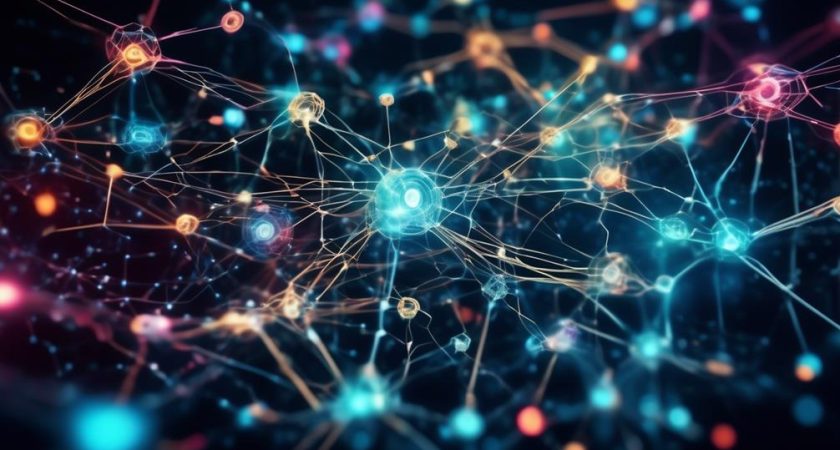
Featured Articles
All Stories
The Semantic, Sovereign Web: the Full Picture of the Future of the Internet

Did you know that over 90% of the world's data has been generated in just the last two years? It's a staggering statistic that highlights the exponential growth and importance of data in today's digital age.
As we witness this data explosion, we find ourselves at a crossroads, where the convergence of the Semantic Web and Web3 presents a transformative vision for the future of the internet.
In this ever-evolving landscape, where machines process information more efficiently and individuals regain control over their personal data, we are on the cusp of a paradigm shift that will redefine the very nature of the internet.
But what does this future hold? How will it impact industries and society as a whole? In this discussion, we will explore the full picture of the Semantic, Sovereign Web, unraveling the key technologies and considerations that shape the future of the internet.
So, let's embark on this journey together, and discover the potential of a more intelligent and decentralized online world.
Key Takeaways
- The Semantic Web aims to make data on the internet more easily understandable by machines.
- Web3 and the Semantic Web converge to create a more intelligent and interactive internet.
- With Web3, individuals will have more control over their personal data, leading to a more private and secure internet.
- The convergence of the Semantic Web and Web3 will create a more intelligent and sovereign internet, impacting society and industry.
The Semantic Web and Web3
The convergence of the Semantic Web and Web3 revolutionizes the internet, enabling a more intelligent and interactive digital landscape.
The Semantic Web, with its standardized data descriptions, allows machines to understand and utilize information more effectively. This opens up a world of possibilities for Semantic Web applications, where data can be better organized and interpreted by machines.
Web3, on the other hand, focuses on the interoperability of different systems on the internet. By leveraging blockchain technology, Web3 enables decentralized and secure transactions, giving individuals more control over their personal data.
The combination of the Semantic Web and Web3 creates a powerful synergy, where machines can understand and interact with data in a more meaningful way. This has profound implications for industries and society as a whole, as it paves the way for a more intelligent and sovereign internet.
The Sovereign Web and Web3
With the convergence of the Semantic Web and Web3, a more intelligent and interactive digital landscape emerges, empowering individuals with greater control over their personal data.
Web3 brings decentralized control, allowing users to decide what information they share and with whom. This shift from centralized systems to decentralized ones leads to a more private and secure internet.
Individuals and organizations gain power, as the internet returns to its original purpose of decentralization. This has significant implications for both society and industry.
However, there are challenges that need to be addressed for Web3 to succeed, such as blockchain scalability. Nonetheless, the Sovereign Web, enabled by Web3, promises to revolutionize the internet by prioritizing personal data protection and giving individuals the ability to control their own digital presence.
Implications for Industry and Society
The convergence of the Semantic Web and Web3 brings about significant implications for both industry and society. One of the key implications is in the area of data privacy. With the Semantic Web and Web3, individuals will have more control over their personal data. They can choose what information to share and with whom, creating a more private and secure internet. This shift towards decentralized systems gives power to individuals and organizations, allowing them to protect their data from unauthorized access.
On the other hand, the impact on the job market is also an important consideration. As the internet becomes more intelligent and interactive, there may be a shift in the types of jobs available. Some jobs may become automated or obsolete, while new opportunities may arise in areas such as artificial intelligence and data analytics. It's important for industries and individuals to adapt and upskill in order to thrive in this changing landscape.
Key Technologies for the Future Internet
As we explore the key technologies shaping the future internet, it's crucial to consider their implications for industry and society in the context of the convergence between the Semantic Web and Web3.
Two key technologies that are driving this convergence are Artificial Intelligence (AI) for data analysis and Blockchain for secure transactions.
AI plays a critical role in processing and analyzing the massive amounts of data generated on the internet. It enables machines to understand and derive insights from this data, leading to more intelligent decision-making and personalized experiences.
On the other hand, Blockchain ensures the security and integrity of transactions on the internet. It provides a decentralized and tamper-proof system for recording and verifying transactions, making it ideal for applications such as digital currencies and smart contracts.
Together, AI and Blockchain are transforming the future internet, enabling a more intelligent and secure digital ecosystem.
Challenges and Considerations
One of the key challenges in shaping the future internet is ensuring data privacy and protection. As we move towards a more interconnected and intelligent web, it becomes crucial to address ethical concerns and protect user data. Here are four considerations to keep in mind:
- Balancing privacy and innovation:
Striking the right balance between data privacy and enabling innovation is essential. We must find ways to protect user privacy without stifling technological advancements.
- Developing robust security measures:
With increased connectivity comes an increased risk of cyber threats. It's imperative to develop robust security measures to safeguard sensitive information and prevent unauthorized access.
- Establishing transparent data governance:
Clear guidelines and regulations need to be established to govern the collection, storage, and usage of data. Transparency in data practices is crucial to build trust among users.
- Educating users about their rights:
Digital literacy and awareness about data privacy are essential for users to make informed decisions. Educating users about their rights and responsibilities regarding their data will empower them to protect their privacy online.
Addressing these challenges will be crucial in shaping a future internet that respects user privacy and addresses ethical concerns.
Frequently Asked Questions
How Will the Convergence of the Semantic Web and Web3 Impact the Privacy and Security of Personal Data?
The convergence of the semantic web and web3 will have significant implications for privacy and data security. Individuals will have more control over their personal data, leading to a more private and secure internet.
What Are the Potential Benefits of Shifting From Centralized Systems to Decentralized Ones in the Context of the Sovereign Web and Web3?
Shifting from centralized systems to decentralized ones in the context of the sovereign web and web3 has potential benefits. Decentralized governance allows for greater control over data ownership, promoting privacy and security in the digital realm.
How Can the Implementation Challenges, Such as Blockchain Scalability, Be Overcome to Ensure the Success of Web3?
To ensure the success of Web3, we must address implementation challenges such as blockchain scalability and interoperability. Solutions like layer 2 scaling solutions and interoperability protocols can help overcome these challenges and enable the widespread adoption of Web3 technologies.
What Role Does Artificial Intelligence (Ai) Play in Enabling the Intelligent and Interactive Internet of the Future?
AI plays a pivotal role in the future internet, enhancing user experience with its intelligence. It empowers automation, transforming industries and jobs. With AI's ability to process and analyze data, the intelligent and interactive internet becomes a reality.
How Can Ethical Concerns Related to AI and Automation Be Addressed in Order to Ensure a Responsible and Inclusive Future Internet?
Addressing ethical concerns related to AI and automation in order to ensure a responsible and inclusive future internet requires transparent algorithms, accountability mechanisms, and robust regulatory frameworks to protect privacy, prevent bias, and promote fairness in decision-making processes.
Conclusion
In conclusion, the convergence of the Semantic Web and Web3 is shaping the future of the internet into a more intelligent and interactive space. With standardized data description and individual control over personal data, we're moving towards a Semantic, Sovereign Web that fosters privacy and security.
This paradigm shift brings us back to the original purpose of the internet – decentralization. However, we must address challenges such as blockchain scalability and ethical concerns surrounding AI and automation to fully realize the potential of Web3.
As the saying goes, 'the proof of the pudding is in the eating,' and only time will tell how these technologies will transform industries and society as a whole.
How AI, Web 3.0 And Software Development Will Shape The Future

The future is being shaped by the convergence of artificial intelligence (AI), Web 3.0, and software development. This convergence is ushering in a transformative landscape of innovation and elevated user experiences.
AI, with its ability to imitate human intelligence, automate tasks, and provide personalized experiences, is poised to drive unprecedented advancements across industries.
Web 3.0, on the other hand, is revolutionizing the web by offering a more engaging user experience and secure internet interactions. This opens new doors for data analytics and dynamic applications, promising a new level of connectivity and interactivity.
In parallel, software development continues to evolve, empowering businesses with custom applications that meet specific needs and respond swiftly to customer demands. This flexibility and agility are crucial in an ever-changing market.
The possibilities that AI, Web 3.0, and software development bring are vast. They promise enhanced efficiency, revolutionized industries, and empowered consumers. The future is ripe with potential, and the journey has only just begun.
Key Takeaways
- AI has the potential to revolutionize industries by automating tasks, improving productivity, and providing personalized experiences.
- Web 3.0 enables a more engaging web experience, with opportunities for data analytics and dynamic applications, using technologies like distributed ledgers and blockchain.
- Software development is an ever-evolving field that drives innovation, allowing businesses to create custom applications and respond quickly to customer needs.
- The combination of AI, Web 3.0, and software development improves efficiency, automates tasks, enables faster decision-making, and benefits both businesses and consumers.
AI's Impact on Industries
AI's impact on industries has been transformative, revolutionizing processes and driving efficiency through automation and intelligent decision-making. One significant aspect of AI's impact is its role in job automation. AI technology has the ability to automate repetitive tasks, freeing up human workers to focus on more complex and creative work. This has the potential to greatly increase productivity and reduce costs for businesses.
Additionally, AI has had a significant impact on customer service. Through AI-powered chatbots and virtual assistants, businesses are able to provide 24/7 support, improving customer satisfaction and reducing response times. AI's ability to analyze customer data also allows businesses to personalize their services and provide tailored recommendations, enhancing the overall customer experience.
The Evolution of Web 3.0
The evolution of Web 3.0 is marked by the integration of modern technologies, such as distributed ledgers and machine learning, aiming to provide users with a more engaging and dynamic web experience. Web 3.0 builds upon the foundation of Web 2.0, which focused on user-generated content and social interaction. However, Web 3.0 takes it a step further by incorporating blockchain technology for increased security and efficiency. This integration allows for the development of decentralized applications (dApps) and smart contracts, which enable peer-to-peer transactions and eliminate the need for intermediaries. The following table illustrates the key features and benefits of Web 3.0:
| Evolution of Web Technologies | Blockchain Integration in Web 3.0 |
|---|---|
| Decentralized Applications (dApps) | Increased Security |
| Smart Contracts | Efficient Peer-to-Peer Transactions |
| Enhanced User Experience | Elimination of Intermediaries |
This evolution in web technologies opens up new possibilities for businesses and individuals, providing them with more control over their data and transactions.
The Future of Software Development
The future of software development holds promising advancements in efficiency, reliability, and innovation.
As technology continues to evolve, emerging software development trends are shaping the way software is created and maintained.
One of these trends is the increasing adoption of low-code and no-code platforms, which allow developers to build applications with minimal coding knowledge. This not only speeds up the development process but also empowers citizen developers to contribute to software creation.
Another trend is the rise of DevOps practices, which emphasize collaboration and automation between software development and IT operations teams. DevOps enables faster software delivery, improved quality, and increased stability.
Additionally, the future of software development includes the integration of artificial intelligence (AI) and machine learning (ML) capabilities, enabling software to learn from user behavior and adapt to their needs.
These emerging trends in software development are set to revolutionize the industry, making software development more efficient, reliable, and innovative.
Enhancing Business Efficiency With AI
With the advancements in software development and the integration of artificial intelligence (AI) capabilities, businesses are enhancing their efficiency through AI-driven solutions. AI-driven automation allows businesses to automate repetitive tasks, freeing up time for employees to focus on more critical and strategic activities. This not only increases productivity but also reduces the chances of errors and improves overall accuracy.
AI also plays a crucial role in improving decision-making processes by analyzing vast amounts of data and providing valuable insights. By leveraging AI algorithms and machine learning techniques, businesses can make faster and more informed decisions, leading to better outcomes.
Additionally, AI can identify patterns and trends that may go unnoticed by humans, enabling businesses to stay ahead of the competition and make proactive decisions.
Revolutionizing the Web With Web 3.0
Web 3.0, the third generation of the web, is revolutionizing online experiences with its advanced technologies and enhanced capabilities. This decentralized internet is built on blockchain technology, providing a more secure and efficient web environment. With Web 3.0, users have control over their data and can interact directly with applications, eliminating the need for intermediaries.
| Web 3.0 Features | Benefits |
|---|---|
| Decentralized internet | Enhanced data privacy |
| Blockchain technology | Improved security |
| Smart contracts | Trustless transactions |
| Distributed ledgers | Transparent information |
| Custom applications | Tailored user experiences |
Web 3.0 enables new opportunities for businesses and developers. It allows for the creation and deployment of custom applications or the enhancement of existing ones. Smart contracts automate business processes, ensuring trust and efficiency. Furthermore, the distributed nature of Web 3.0 ensures transparent information sharing and reduces the risk of data breaches. By embracing Web 3.0 technologies, businesses can unlock the full potential of the decentralized internet and create innovative solutions to meet the evolving needs of users.
Empowering Businesses With Custom Applications
Custom applications empower businesses to tailor their software solutions to meet their specific needs and drive efficiency and productivity. Through custom application development, businesses can automate their processes, streamline operations, and eliminate manual tasks.
By leveraging technologies like AI and web 3.0, businesses can create applications that automate repetitive tasks, analyze data to make informed decisions, and provide personalized experiences to their customers. These custom applications can integrate with existing systems and databases, ensuring seamless data flow and enhancing overall business automation.
With the ability to create custom applications, businesses gain a competitive edge by optimizing their workflows, reducing costs, and improving customer satisfaction. Custom application development is a key driver in shaping the future of businesses, enabling them to adapt and thrive in the digital era.
Empowering Consumers With Personalized Experiences
Consumers today are empowered with personalized experiences that cater to their specific needs and preferences. This empowerment is made possible through the power of data analytics and personalized marketing strategies.
With the help of AI and web 3.0 technologies, businesses can gather and analyze vast amounts of data to understand consumer behavior and preferences better. This data-driven approach enables businesses to create personalized marketing strategies that deliver tailored recommendations and offers to individual consumers.
By leveraging AI algorithms, businesses can provide personalized experiences that resonate with consumers on a deeper level, increasing engagement and customer satisfaction. Furthermore, web 3.0 technologies like smart contracts and distributed ledgers ensure secure and efficient access to personalized services, allowing consumers to store important information and make payments with confidence.
In this era of advanced technology, personalized experiences have become a powerful tool for businesses to connect with their consumers and build long-lasting relationships.
Frequently Asked Questions
What Are Some Potential Ethical Concerns Associated With the Use of AI in Industries?
Some potential ethical concerns associated with the use of AI in industries include privacy issues, bias in decision-making algorithms, job displacement, and lack of transparency. AI regulations are needed to address these concerns and ensure responsible and ethical AI deployment.
How Does Web 3.0 Address the Issue of Data Privacy and Security?
Web 3.0 addresses data privacy and security through blockchain technology, which ensures transparent and tamper-proof transactions. It empowers users with data ownership and control, reducing reliance on centralized entities and enhancing privacy.
What Are Some Emerging Trends in Software Development That Businesses Should Be Aware Of?
Some emerging trends in software development that businesses should be aware of include the adoption of low code development platforms and the use of Agile methodologies, which enable faster and more efficient software development processes.
Can AI Completely Replace Human Workers in CertAIn Industries?
AI has the potential to automate tasks and improve efficiency, leading to job displacement in certain industries. While it can never completely replace human workers, it will have a significant impact on automation and the workforce.
How Can Businesses Ensure That the Personalized Experiences Provided to Consumers Through AI Are Not Intrusive or Invasive?
Ethical considerations are crucial for businesses to ensure that personalized experiences provided through AI are not intrusive or invasive. Transparency, consent, and data privacy measures should be implemented to build and maintain consumer trust.
Conclusion
In the realm of technological advancements, the convergence of AI, Web 3.0, and software development holds immense potential for reshaping industries and revolutionizing the way businesses operate.
By enhancing efficiency, automating processes, and enabling faster decision-making, these technologies bring forth a transformative landscape where innovation thrives and user experiences are elevated.
Like a symphony of possibilities, they harmonize to create a future where personalized experiences, improved security, and faster access to data are the norm.
Managing Nuclear Knowledge With Semantic Technologies

The effective management of nuclear knowledge is crucial for the advancement and safety of the nuclear energy field. However, traditional approaches face numerous challenges in organizing and accessing this valuable information.
In recent years, the application of semantic technologies has emerged as a potential solution to address these challenges. By leveraging the power of semantic technology, nuclear knowledge management can be significantly improved, leading to enhanced information retrieval, better decision-making, and accelerated development of nuclear technologies.
In this discussion, we will explore the role of semantic technology in managing nuclear knowledge, examining its benefits and practical applications through real-world case studies. Stay tuned to discover how semantic technologies are revolutionizing the way we handle nuclear knowledge and shape the future of the nuclear energy industry.
Key Takeaways
- Lack of a systematic approach to nuclear knowledge hinders effective knowledge management.
- Semantic technology can improve the organization and accessibility of nuclear data and information.
- Semantic technology facilitates sharing and reusing of nuclear knowledge across sectors and organizations.
- Implementation of semantic technology can enhance the efficiency and safety of nuclear power plant operations.
Challenges in Nuclear Knowledge Management
The management of nuclear knowledge poses several challenges that hinder the efficient sharing and utilization of information and experiences within the nuclear sector.
One of the key challenges is improving information accessibility. The nuclear sector faces difficulties in accessing and searching for relevant information due to the lack of a systematic approach to knowledge management. This leads to the creation of data silos, where information becomes isolated and inaccessible to those who need it.
Overcoming these data silos is crucial for effective knowledge sharing and utilization. Additionally, limited metadata and lack of links between diverse information resources further impede the accessibility and utilization of nuclear knowledge.
To address these challenges, efforts are being made to develop a shared language and knowledge organization system that can improve the accessibility and utilization of nuclear knowledge.
Benefits of Semantic Technology
Improving the accessibility and utilization of nuclear knowledge can be achieved through the implementation of semantic technology, which offers numerous benefits for the nuclear sector. Semantic technology applications in nuclear knowledge management address the challenges faced by the industry, such as the lack of systematic approach and difficulty in accessing relevant information. By organizing data and information, semantic technology facilitates sharing and reusing of information across sectors and organizations. It enhances the availability of nuclear safety standards, recommendations, and best practices, thereby contributing to the efficiency and safety of nuclear power plant operations. Moreover, semantic technology accelerates research and development activities in the nuclear field and supports the management of complex and interdisciplinary systems. However, there are also challenges in implementing semantic technology, such as ensuring data interoperability and overcoming resistance to change.
Below is a table summarizing the benefits of semantic technology in nuclear knowledge management:
| Benefits of Semantic Technology |
|---|
| Improves organization of data and information |
| Facilitates sharing and reusing of information across sectors and organizations |
| Enhances availability of nuclear safety standards, recommendations, and best practices |
| Accelerates research and development in the nuclear field |
| Supports the management of complex and interdisciplinary systems |
Case Study: Semantic Technology in India
How has semantic technology been implemented in India to enhance nuclear knowledge management?
In India, the Indira Gandhi Centre for Atomic Research (IGCAR) has implemented a knowledge management portal that utilizes semantic technology. This portal enables the capturing, storing, and sharing of nuclear research information, thereby enhancing the efficiency and safety of nuclear power plant operations.
By leveraging computational intelligence technologies, such as semantic technology, the IGCAR portal improves productivity and communication in the nuclear sector.
Additionally, the International Atomic Energy Agency (IAEA) has developed a pilot repository platform for knowledge and learning objects, further demonstrating the application of semantic technology in managing nuclear knowledge.
Understanding Semantic Technology
Semantic technology, a powerful tool in knowledge management, processes information based on context and meaning, enabling correlations and links between different data and information resources.
To understand semantic technology further, consider the following points:
- Semantic technology applications:
- Improves organization of data and information
- Facilitates sharing and reusing of information across sectors and organizations
- Enhances availability of nuclear safety standards, recommendations, and best practices
- Semantic technology implementation challenges:
- Resource Description Framework (RDF) and Web Ontology Language (OWL) encode semantics
- Correlations and links can be generated between different data and information resources
- Semantic-based systems connect multiple organizations' systems
Semantic technology plays a crucial role in the nuclear field by improving the effectiveness and efficiency of knowledge management, enhancing information retrieval and use, supporting decision-making and problem-solving, and contributing to the development and implementation of nuclear technologies.
The International Atomic Energy Agency (IAEA) has explored the potential of semantic technology in managing nuclear knowledge.
Role of Semantic Technology in the Nuclear Field
Semantic technology plays a pivotal role in nuclear knowledge management by revolutionizing information retrieval and use, supporting critical decision-making, and driving the development and implementation of nuclear technologies. It improves the effectiveness and efficiency of nuclear knowledge management, enhances the retrieval and use of information in the nuclear sector, and supports better decision-making and problem-solving. By incorporating semantic technology, the nuclear field can benefit from improved safety measures and accelerated research and development.
The table below highlights the key ways in which semantic technology contributes to the nuclear field:
| Role of Semantic Technology in the Nuclear Field |
|---|
| Improves effectiveness and efficiency of nuclear knowledge management |
| Enhances retrieval and use of information in the nuclear sector |
| Supports better decision-making and problem-solving |
| Contributes to the development and implementation of nuclear technologies |
| Explored for its potential in managing nuclear knowledge by the IAEA |
Through the use of semantic technology, the nuclear industry can improve safety measures by effectively organizing and accessing relevant information. It also accelerates research and development by facilitating the sharing and reusing of information across sectors and organizations. Overall, semantic technology plays a crucial role in advancing the nuclear field and ensuring the efficient and safe operation of nuclear technologies.
Improving Effectiveness and Efficiency
Improving effectiveness and efficiency in nuclear knowledge management requires the implementation of semantic technology to streamline information retrieval and optimize decision-making processes.
The benefits of semantic technology in this context are numerous. First, it improves data organization by encoding semantics and generating correlations and links between different data and information resources. This enables easier access to relevant information, enhancing knowledge sharing across sectors and organizations.
Second, semantic technology facilitates the sharing and reusing of information, accelerating research and development in the nuclear field.
Lastly, it supports the management of complex and interdisciplinary systems, contributing to the efficiency and safety of nuclear power plant operations.
Enhancing Retrieval and Use of Information
To optimize the retrieval and utilization of information in the field of nuclear knowledge management, the implementation of semantic technology is crucial. Semantic technology applications, such as semantic search algorithms, play a vital role in enhancing the retrieval and use of information in the nuclear sector. These applications enable the processing of information based on context and meaning, allowing correlations and links to be generated between different data and information resources. As a result, semantic-based systems can connect multiple organizations' systems and provide access to relevant information from various sources without the need for individual searching. This improves the effectiveness and efficiency of nuclear knowledge management, supporting better decision-making, problem-solving, and the development and implementation of nuclear technologies.
| Semantic Technology Applications | Semantic Search Algorithms |
|---|---|
| Improves organization of data and information | Enhances the retrieval of relevant information |
| Facilitates sharing and reusing of information | Improves the efficiency of search results |
| Enhances availability of nuclear safety standards, recommendations, and best practices | Supports the discovery of related information |
| Accelerates research and development in the nuclear field | Provides contextually relevant search results |
| Supports the management of complex and interdisciplinary systems | Enables more precise and targeted searches |
Supporting Decision-Making and Problem-Solving
Supporting effective decision-making and problem-solving is a critical aspect of utilizing semantic technology in the field of nuclear knowledge management. With the help of semantic technology, decision-making processes can be improved, and problem-solving capabilities can be enhanced. Here are three ways in which semantic technology supports these aspects:
- Knowledge integration and correlation:
Semantic technology enables the integration of diverse data and information resources, allowing decision-makers to access relevant information from various sources without the need for individual searches. Correlations and links can be generated between different data sets, providing a comprehensive view of the nuclear domain.
- Context awareness and analysis:
Semantic-based systems process information based on context and meaning, facilitating a deeper understanding of the data. This context awareness enables decision-makers to analyze complex and interdisciplinary systems, leading to more informed decisions and effective problem-solving.
- Decision support systems:
Semantic technology can be used to develop decision support systems that provide decision-makers with real-time information, insights, and recommendations. These systems leverage the semantic organization of knowledge to enhance decision-making processes, enabling proactive problem-solving and improving overall decision-making capabilities.
Frequently Asked Questions
What Are Some Specific Challenges Faced in Nuclear Knowledge Management?
Data management challenges in nuclear knowledge management include difficulties in knowledge sharing and limited access to relevant information. These challenges hinder effective decision-making and problem-solving in the nuclear sector, highlighting the need for improved knowledge organization and retrieval systems.
How Does Semantic Technology Improve the Organization of Data and Information?
Semantic technology improves the organization of data and information by encoding semantics using RDF and OWL. It enables correlations and links between different resources, enhancing information retrieval and supporting better decision-making and problem-solving in the nuclear sector.
Can You Provide More Details About the Case Study of Semantic Technology in India?
The case study of semantic technology in India showcases the successful implementation of a knowledge management portal in the nuclear sector. It addresses implementation challenges and highlights the use of computational intelligence technologies to improve productivity and communication.
What Is the Role of Resource Description Framework (Rdf) and Web Ontology Language (Owl) in Semantic Technology?
RDF and OWL are key components of semantic technology, enabling the encoding of semantics and the generation of correlations and links between different data and information resources. They facilitate the efficient retrieval and use of information in various sectors, including healthcare.
How Does Semantic Technology Contribute to the Development and Implementation of Nuclear Technologies?
Semantic technology contributes to the development and implementation of nuclear technologies by improving knowledge management, enhancing information retrieval and use, supporting decision-making, and facilitating the sharing and reusing of information across sectors and organizations.
Conclusion
In conclusion, the application of semantic technology in managing nuclear knowledge offers numerous benefits for the field.
It addresses challenges such as the lack of systematic approaches and limited access to relevant information.
By improving organization, facilitating information sharing, and supporting decision-making, semantic technology enhances effectiveness and efficiency in knowledge management.
Through the case study in India and the efforts of the IAEA, the practical applications and benefits of semantic technology in the nuclear field are demonstrated.
Its role in accelerating research and development and contributing to the implementation of nuclear technologies is crucial.
Key Differences Between Web 3.0 And IoT(Internet Of Things)

Web 3.0 and the Internet of Things (IoT) are two significant technological advancements that have captured the attention of the tech industry. While they both contribute to the digital transformation, they have distinct goals and approaches.
Web 3.0 aims to revolutionize the current web by creating an open, interconnected, and intelligent platform that prioritizes user experiences and control. It seeks to enhance the way people interact with the internet by providing personalized, context-aware, and decentralized services. Web 3.0 is characterized by technologies such as artificial intelligence, machine learning, blockchain, and semantic web. These technologies enable the creation of smart applications, smart contracts, and decentralized networks.
On the other hand, IoT focuses on connecting physical objects through embedded technologies for data exchange and identification. Its goal is to enable efficient communication and data sharing between devices and systems. IoT devices are equipped with sensors, actuators, and connectivity capabilities that allow them to collect and transmit data. This data can then be used for various purposes, such as improving efficiency, enhancing safety, and enabling predictive maintenance. The underlying technologies of IoT include wireless communication protocols, sensor networks, cloud computing, and big data analytics.
These key differences between Web 3.0 and IoT raise intriguing questions about their impact on the tech industry and their potential to shape the future. How do these technologies differ in terms of their goals, characteristics, and underlying technologies? What role do they play in the digital transformation, and what does this mean for the future of technology?
Let's explore these questions further to gain a deeper understanding of the contrasting nature of Web 3.0 and IoT.
Key Takeaways
- Web 3.0 focuses on building open, interconnected, and intelligent websites, while IoT is a network of tangible things embedded with sensors and software.
- Web 3.0 aims to create a semantic web, prioritize improved user experiences, and offer more control to users, whereas IoT aims to connect objects for data identification and gathering.
- Web 3.0 incorporates semantic web technology, AI, spatial computing, decentralization, and ubiquity, while IoT utilizes connectivity technologies, AI, analytics, machine learning, and affordable sensor technology.
- The goals of Web 3.0 include democratizing the internet, giving users control over their data, and improving security, privacy, and trust, while IoT aims to connect a network of objects for data exchange and automation.
Goals and Objectives
The goals and objectives of Web 3.0 and IoT differ in their approach to digital transformation and the desired outcomes they aim to achieve.
Web 3.0 focuses on future advancements in the internet, aiming to create a more open and decentralized web. It prioritizes user control by giving individuals the power to manage their own data and have greater privacy and security. Web 3.0 seeks to democratize the internet and eliminate market oligopoly.
On the other hand, IoT aims to connect physical objects and enable the exchange of data for automation, digitization, and optimization. While it also emphasizes connectivity and data exchange, IoT does not specifically prioritize user control to the same extent as Web 3.0.
Both Web 3.0 and IoT contribute to digital transformation, but they have different goals and approaches.
Definitions and Characteristics
Web 3.0 and IoT are distinct concepts in the realm of digital transformation, each with their own set of definitions and characteristics.
Web 3.0 refers to the third stage of internet development, focusing on building open, interconnected, and intelligent websites. It aims to create a semantic web, prioritizing improved user experiences and offering more control to users.
On the other hand, IoT is a network of tangible things embedded with sensors and software, allowing them to exchange data with other connected devices.
Both Web 3.0 and IoT emphasize connectivity, data exchange, intelligence, and bridging the gap between the physical and virtual worlds.
While Web 3.0 aims to give users control over their data and improve security and privacy, IoT focuses on automation, digitization, and optimization through data insights.
Underlying Technologies
With their distinct goals and approaches, both Web 3.0 and IoT rely on a range of underlying technologies to bring their visions to fruition.
Web 3.0 incorporates technologies such as the Semantic Web, which enables machines to understand and interpret web content more effectively. This technology allows for improved search results and personalized user experiences. Additionally, Web 3.0 leverages AI, spatial computing, decentralization, and ubiquity to create a more interconnected and intelligent web.
On the other hand, IoT utilizes connectivity technologies to establish networks between objects and enable data exchange. This includes technologies such as Bluetooth, Wi-Fi, and cellular networks. Furthermore, IoT leverages AI, analytics, machine learning, and affordable sensor technology with low power consumption to enable automation, digitization, and optimization.
These underlying technologies are vital for both Web 3.0 and IoT to achieve their respective goals of building a more interconnected and intelligent web and connecting objects for data insights and automation.
Impact on the Tech Industry
The impact of Web 3.0 and IoT on the tech industry cannot be understated as they reshape the way we interact with and utilize technology. Here are three key ways in which these technologies are influencing the tech industry:
- Increased Applications: Web 3.0 and IoT are expanding the possibilities for application development. With Web 3.0, there is a greater focus on creating intelligent and interconnected websites, enabling enhanced user experiences and personalized services. On the other hand, IoT is driving the development of smart devices and systems that can automate processes, optimize operations, and improve efficiency across various industries.
- Market Trends: Web 3.0 and IoT are driving significant market trends. Companies are increasingly investing in Web 3.0 technologies to improve data privacy and security, as well as offer more control to users. Similarly, the IoT market is experiencing rapid growth as businesses recognize the potential for leveraging connected devices and data insights to gain a competitive edge.
- Digital Transformation: Web 3.0 and IoT are key drivers of digital transformation across industries. These technologies enable organizations to leverage connectivity, data exchange, and intelligence to transform their business processes and deliver innovative products and services. As a result, industries such as healthcare, manufacturing, transportation, and retail are undergoing significant changes to adapt to the opportunities and challenges presented by Web 3.0 and IoT.
Contribution to Digital Transformation
As the tech industry continues to evolve, the contributions of Web 3.0 and IoT to digital transformation are becoming increasingly evident. Both Web 3.0 and IoT play crucial roles in shaping the future of technology and driving digital transformation.
To highlight their contributions, let's examine a table that outlines the key ways in which Web 3.0 and IoT contribute to digital transformation:
| Web 3.0 | IoT |
|---|---|
| Democratizes the internet | Enables connected objects |
| Gives users control over their data | Facilitates data exchange |
| Enhances security and privacy | Automates processes |
| Prioritizes improved user experiences | Optimizes operations |
| Bridges the gap between physical and virtual worlds | Enables digitization |
Web 3.0 focuses on creating a more open, interconnected, and intelligent web, empowering individuals and improving user experiences. On the other hand, IoT connects objects and leverages data insights for automation, optimization, and digitization. Together, these technologies contribute to the digital transformation of industries and society as a whole.
Importance and Future Phases
Web 3.0 and IoT are crucial drivers of digital transformation, shaping the future of technology and guiding its upcoming phases. Their importance lies in their ability to revolutionize the way we interact with the internet and the physical world.
- Empowering Individuals:
Web 3.0 aims to give users more control over their data and privacy, allowing them to have a more personalized and secure online experience. IoT, on the other hand, enables individuals to connect and control physical objects, leading to increased automation and efficiency in various industries.
- Enhanced Connectivity:
Both Web 3.0 and IoT emphasize connectivity, creating a network of interconnected devices and websites. This connectivity enables seamless data exchange and collaboration between different platforms and devices, paving the way for new possibilities in areas such as smart homes, smart cities, and industrial automation.
- Future Phases:
As technology continues to evolve, Web 3.0 and IoT will play a pivotal role in shaping the future phases of digital transformation. These technologies will further advance the integration of AI, machine learning, and blockchain, leading to more intelligent, secure, and decentralized systems.
Frequently Asked Questions
How Does Web 3.0 Prioritize User Experiences Compared to Iot?
Web 3.0 prioritizes user experiences by creating open, interconnected, and intelligent websites that offer improved control over data. In contrast, IoT focuses on connecting objects and using data insights for automation, digitization, and optimization.
What Are the Specific Advancements in AI and Machine Learning That Benefit Both Web 3.0 and Iot?
Advancements in AI and machine learning play a crucial role in both Web 3.0 and IoT. They enable automation and decision making, enhance predictive analytics, and contribute to the overall improvement of user experiences and data-driven insights.
How Does Web 3.0 Aim to Give Users Control Over Their Data, While Iot Focuses on Data Identification and Gathering?
Web 3.0 aims to give users control over their data, prioritizing data ownership, security, and privacy. In contrast, IoT focuses on data identification and gathering, emphasizing connectivity and user experience.
In What Ways Do Web 3.0 and Iot Bridge the Gap Between the Physical and Virtual Worlds?
Web 3.0 and IoT bridge the physical and virtual worlds by enhancing connectivity, data exchange, and user experiences. Web 3.0 achieves this through the semantic web, prioritizing user control, while IoT connects objects with embedded technologies for data identification and gathering.
Can You Provide Examples of How Web 3.0 and Iot Are Guiding the Future Phases of Technology?
Web 3.0 and IoT are guiding the future phases of technology through various examples. For instance, Web 3.0 enables decentralized finance, while IoT contributes to the development of smart cities, showcasing the transformative potential of these technologies.
Conclusion
In conclusion, Web 3.0 and the Internet of Things (IoT) are distinct technologies with different goals and approaches.
Web 3.0 aims to create an open and intelligent web, prioritizing user experiences and control. It focuses on improving the way users interact with the internet, making it more personalized and efficient. This includes advancements in artificial intelligence, virtual reality, and natural language processing.
On the other hand, IoT focuses on connecting physical objects and leveraging data for automation and optimization. It aims to create a network of interconnected devices that can collect and exchange data, enabling automation and optimization in various industries like healthcare, transportation, and manufacturing.
Understanding these differences is crucial for grasping their impact on the tech industry and their potential to shape future technological advancements.
As an interesting statistic, it is estimated that by 2025, there will be over 41 billion connected IoT devices worldwide. This further emphasizes the significance of IoT in our increasingly interconnected world.
Toward the Semantic Web
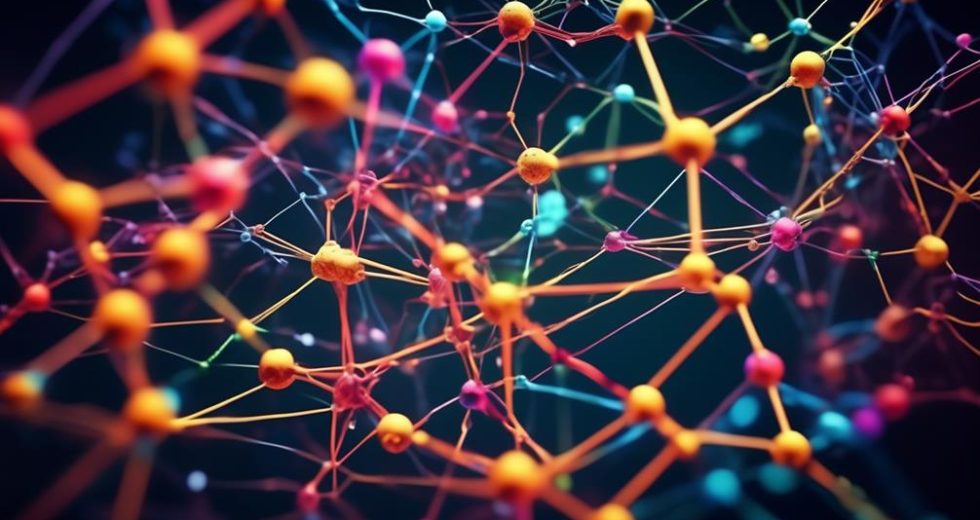
The evolution of the World Wide Web has brought about an exciting prospect known as the Semantic Web. This concept, envisioned by Tim Berners-Lee, the inventor of the Web, aims to revolutionize the way data is stored and accessed online.
By introducing a new standard and categorizing information with inherent meaning, the Semantic Web promises numerous benefits, such as personalized services, enhanced data aggregation capabilities, and a collaborative platform for information contribution.
Additionally, the Rule Interchange Format (RIF) enables web programmers to write rules for data translation between different sites, further expanding the potential of the Semantic Web.
As we embark on this journey toward a more intelligent and efficient web experience, it becomes clear that the impact of the Semantic Web is poised to be a quiet revolution, shaping the future of the internet.
Key Takeaways
- The Semantic Web is a more sophisticated version of the World Wide Web that aims to store data with meaning.
- It allows individuals to contribute and control their own data, creating a collaborative platform.
- The adoption of standards like RIF helps unify data from different sites and enhances data aggregation capabilities.
- The Semantic Web has the potential to revolutionize the way information is stored and accessed on the Internet, enabling personalized and targeted services.
The Vision of Semantic Web
The vision of the Semantic Web is to create a more intelligent and organized Internet by storing and accessing data that possesses a deeper understanding of its meaning. This vision is achieved through the use of semantic web technologies, which enable the representation of knowledge in a structured and machine-readable format.
Knowledge representation is a key aspect of the Semantic Web, as it allows for the categorization and organization of data according to its meaning. By utilizing semantic web technologies, the internet can become a vast networked database where information is not only interconnected, but also categorized and queryable in various ways.
This deeper understanding of data meaning will enable more sophisticated applications and services, ultimately leading to a more efficient and personalized web experience for users.
Benefits of Semantic Web
The adoption of Semantic Web standards brings numerous advantages to the way data is organized and accessed on the Internet. Here are three key benefits of the Semantic Web:
- Collaborative contributions: The Semantic Web enables a networked database where individuals can control and contribute their own data. It becomes a collaborative platform where huge numbers of people can contribute, ensuring a diverse and comprehensive collection of information.
- Uniform data labeling: With the Semantic Web, data is organized and labeled uniformly, avoiding inconsistencies. Existing standards, such as the Web Ontology Language, help solve labeling problems, ensuring that information is categorized correctly and can be queried in various ways.
- Enhanced data aggregation: The Semantic Web offers a way to aggregate data that is not already known. Content aggregators can retrieve data from sources that categorize their data according to Semantic Web standards, even from new sources that didn't exist when their site was built. This enables the Internet to offer more personalized and targeted services based on categorized data.
Standardizing Data With RIF
Standardizing data across different sites can be achieved using the Rule Interchange Format (RIF).
RIF is a standard that allows web programmers to write rules for translating data between different sites, ensuring cross-site compatibility. This is crucial for data integration, as different sites may have different labeling conventions.
By adopting RIF, web applications can unify data from various sources, enabling seamless data aggregation and analysis. RIF provides a single standard that can be used across different software applications, enhancing data integration capabilities.
With RIF, web developers can overcome the challenge of consolidating data from disparate sources, ensuring consistent and uniform data representation.
Advantages of Data Aggregation
Data aggregation offers numerous advantages in the field of information management and analysis. Here are three key benefits of data aggregation:
- Improved data integration: By aggregating data from multiple sources, organizations can enhance their understanding of complex relationships and patterns. This allows for a more comprehensive analysis and enables informed decision-making.
- Enhanced collaboration: Data aggregation provides a collaborative platform where different stakeholders can contribute their data. This fosters collaboration and knowledge sharing, leading to more accurate and comprehensive insights.
- Efficient resource utilization: Aggregating data eliminates the need to collect information from multiple sources individually, saving time and resources. It also enables the reuse of existing data, reducing redundancy and improving efficiency in data management processes.
Unleashing the Potential of Semantic Web
Aggregating data from multiple sources opens up new possibilities for harnessing the full potential of the Semantic Web. By integrating data and representing knowledge in a structured manner, the Semantic Web becomes a powerful tool for organizing and retrieving information. Data integration allows for the harmonization of diverse datasets, enabling the creation of a comprehensive knowledge base. This knowledge representation is crucial for conducting advanced searches, making connections between different pieces of information, and deriving meaningful insights.
To illustrate the impact of data integration and knowledge representation in the Semantic Web, consider the following table:
| Data Source A | Data Source B | Data Source C |
|---|---|---|
| Information 1 | Information 4 | Information 7 |
| Information 2 | Information 5 | Information 8 |
| Information 3 | Information 6 | Information 9 |
Through the integration of data from multiple sources, the Semantic Web allows for a holistic view of information. It enables the discovery of relationships and patterns that would otherwise remain hidden. This comprehensive approach to data aggregation ultimately unleashes the full potential of the Semantic Web, empowering users with a deeper understanding of the interconnectedness of knowledge.
Personalized Services With Semantic Web
The Semantic Web enables the delivery of personalized services based on categorized data. This has several implications for the future of the web:
- Enhanced User Experience: With the Semantic Web, users can receive tailored recommendations and suggestions based on their preferences and interests. For example, an online shopping platform can offer personalized product recommendations based on the user's browsing history and previous purchases.
- Efficient Information Retrieval: Semantic Web applications can organize and categorize vast amounts of data, making it easier for users to find relevant information quickly. Search engines can provide more accurate and targeted results by understanding the context and meaning of the user's query.
- Overcoming Semantic Web Challenges: The Semantic Web faces challenges such as data integration, ontology development, and scalability. However, advancements in technologies like natural language processing and machine learning can help overcome these challenges and improve the effectiveness of personalized services.
Quiet Revolution: Impact of Semantic Web
A significant but often overlooked shift is occurring on the Internet with the advent of the Semantic Web. The benefits of data aggregation provided by the Semantic Web are immense. It allows for the retrieval of data from sources that categorize their data according to Semantic Web standards, enabling content aggregators to gather information that was previously unknown.
This opens up new possibilities for small sites to access data from sources that did not exist when they were built. The future implications of the Semantic Web are vast. It has the potential to revolutionize the way information is stored and accessed on the Internet, leading to a more intelligent and efficient web experience.
As the Semantic Web becomes a reality, it will continue to enhance the capabilities of the Internet, even if most users are unaware of it.
Embracing the Future of Web
With the ongoing evolution of the Semantic Web, the future of web development and information access is poised for a transformative shift. Embracing this future holds several key advantages:
- Data interoperability: The Semantic Web enables seamless integration and exchange of data across different platforms and systems. It eliminates data silos and allows for the sharing and utilization of information in a standardized format.
- Knowledge representation: The Semantic Web provides a framework for representing knowledge in a structured and machine-readable manner. This allows for more accurate and comprehensive understanding of data, leading to improved search results and personalized services.
- Enhanced web capabilities: The Semantic Web opens up new possibilities for intelligent applications and services. It enables advanced data aggregation, automated reasoning, and intelligent decision-making, making the web more efficient, intuitive, and user-friendly.
Frequently Asked Questions
How Does the Semantic Web Differ From the Traditional World Wide Web?
The Semantic Web differs from the traditional World Wide Web by allowing data to be stored and accessed with meaning. It offers advantages such as better data organization, uniform labeling, and the ability to aggregate data that users may not already be aware of. Conversely, the traditional web has limitations in terms of data categorization and inconsistency.
What Is the Role of the World Wide Web Consortium (W3c) in the Development of the Semantic Web?
The W3C plays a crucial role in the development of the Semantic Web by publishing standards and guidelines. However, challenges in implementing the Semantic Web include data categorization and ensuring consistent labeling across different sources.
How Does the Semantic Web Ensure Uniformity and Consistency in Data Labeling?
Data standardization and integration are key aspects of the Semantic Web, ensuring uniformity and consistency in data labeling. By adhering to Semantic Web standards, information is categorized and labeled uniformly, minimizing inconsistencies and enhancing data aggregation capabilities.
What Is the Purpose of the Rule Interchange Format (Rif) and How Does It Enhance Data Translation Between Different Sites?
The Rule Interchange Format (RIF) is a standard that enhances data translation between different sites by allowing web programmers to write rules. These rules unify data from sources with different labeling conventions, enabling efficient data exchange and aggregation.
How Does the Semantic Web Enable Content Aggregators to Retrieve Data From New and Unknown Sources?
The Semantic Web enables content aggregators to extract and integrate data from new and unknown sources by categorizing and labeling information uniformly. This allows for efficient data retrieval and aggregation, expanding the scope of content aggregation capabilities.
Conclusion
In conclusion, the Semantic Web represents a significant advancement in the evolution of the World Wide Web. By standardizing data with the Rule Interchange Format (RIF) and enabling data aggregation, it has the potential to revolutionize the way information is stored and accessed on the Internet.
This, in turn, can lead to more intelligent and efficient web experiences. One hypothetical example of the Semantic Web's potential is a personalized recommendation system that analyzes a user's browsing history and preferences to suggest relevant content, enhancing the overall web experience.
Web 2.0 Vs Web 3.0: What's the Difference?

In the ever-evolving landscape of the internet, Web 2.0 and Web 3.0 stand out as significant milestones.
While Web 2.0 brought about a new era of user interactivity and collaboration, Web 3.0 takes the concept of online experiences to unprecedented heights.
With advancements in artificial intelligence, machine learning, and extended reality technologies, Web 3.0 offers immersive and personalized encounters that blur the boundaries between the virtual and physical worlds.
But what exactly sets Web 2.0 apart from its successor? What are the key differences that shape these two distinct phases of the internet?
Brace yourself as we delve into the fascinating realm of Web 2.0 versus Web 3.0, uncovering the transformative possibilities that lie within.
Key Takeaways
- XR technologies like AR, VR, and MR offer more realistic and immersive interactions with the digital world compared to traditional web experiences.
- Web 3.0 is the next revolution after Web 2.0 and is built on four foundational pillars: semantic markup, blockchain and cryptocurrency, 3D visualization, and AI.
- Web 3.0 enables the spatial internet, where immersive worlds are seamlessly connected via the web, allowing users to overlay digital content in the real world.
- Web 3.0 combines 2D and 3D experiences, providing transformative 3D experiences that can be accessed through smartphones, computers, and headsets.
Foundational Differences
Web 3.0, the next revolution after Web 2.0, is founded on the principles of semantic markup, blockchain technology, 3D visualization, and AI, which sets it apart from its predecessor.
One of the key differences between Web 2.0 and Web 3.0 is the implementation of the Semantic Web. In Web 3.0, information is not only presented but also understood by machines through semantic markup. This enables better search results, personalization, and automation.
Additionally, Web 3.0 incorporates blockchain technology, which ensures transparency, security, and decentralization of data. Blockchain's distributed ledger system eliminates the need for intermediaries and enhances trust.
Web 3.0 also leverages 3D visualization, providing immersive and interactive experiences.
AI plays a crucial role in Web 3.0, enabling intelligent automation, personalized recommendations, and advanced analytics.
XR and Immersive Experiences
XR and immersive experiences have transformed the way users interact with the digital world, offering unprecedented levels of realism and interactivity.
Advancements in XR technology, such as augmented reality (AR), virtual reality (VR), and mixed reality (MR), have opened up new possibilities in various fields.
One significant impact of XR is in education and training. XR technologies provide immersive and engaging learning experiences, allowing students to explore virtual environments and interact with virtual objects. This enhances understanding and retention of complex concepts.
In addition, XR can simulate real-life scenarios, enabling trainees to practice and develop skills in a safe and controlled environment. From medical training to industrial simulations, XR is revolutionizing the way we educate and train individuals by providing realistic and hands-on experiences.
Spatial Internet Integration
The integration of spatial internet into XR and immersive experiences has revolutionized the way users interact with the digital world. It has opened up new possibilities for seamless blending of physical and virtual environments. Spatial internet enables seamless connectivity between the real and digital worlds, allowing users to overlay digital content onto the real world in real-time. This integration has numerous real-world applications, such as navigation, shopping, and tourism.
Users can now access information and interact with digital content in a more immersive and interactive manner. Spatial internet integration in Web 3.0 enhances user experiences by providing a more realistic and seamless connection between the physical and virtual worlds. This advancement in technology has the potential to transform various industries and create new opportunities for innovation and creativity.
2D and 3D Experiences
In the realm of immersive digital interactions, the evolution from Web 2.0 to Web 3.0 has brought about a significant shift towards incorporating both 2D and 3D experiences. This shift has opened up new possibilities for users to engage with content in a more dynamic and realistic way.
Here are three key aspects to consider in the realm of D and 3D experiences:
- AR vs VR: Web 3.0 allows for the integration of both augmented reality (AR) and virtual reality (VR) technologies. AR overlays digital information onto the real world, enhancing the user's environment, while VR creates a completely immersive digital experience.
- Mobile vs Desktop: Web 3.0 experiences can be accessed through smartphones, computers, and headsets, providing users with flexibility and convenience. Mobile devices enable on-the-go interactions, while desktops offer a more robust and immersive experience.
- Enhanced User Experiences: Web 3.0 enhances user experiences with the inclusion of 3D elements. This allows for more interactive and realistic interactions, creating a more engaging and immersive digital environment.
Evolving User Experiences
With the advancements of Web 3.0, user experiences have undergone a significant evolution, leveraging AI and ML to provide automated and customized interactions that go beyond mere user contributions. Web 3.0 allows for real-time personalization and automation in user experiences, enhancing the overall user journey. Through AI and ML technologies, Web 3.0 can gather and analyze vast amounts of data to deliver personalized content and recommendations in real-time. This level of customization and automation creates a seamless and immersive user experience, where users feel understood and catered to. The following table illustrates the key differences between Web 2.0 and Web 3.0 in terms of evolving user experiences:
| Web 2.0 | Web 3.0 |
|---|---|
| User contributions | Automated and customized interactions |
| Limited personalization | Real-time personalization |
| Static information | Dynamic and interactive content |
| Manual data tracking | Real-time data monitoring |
| Interactivity limited to user inputs | Executable experiences beyond user contributions |
Advancements in AI and ML
Advancements in AI and ML have revolutionized the way web technologies deliver personalized and dynamic user experiences. These advancements have had a significant impact on user experiences in several ways:
- Personalization: AI and ML applications analyze user data, preferences, and behavior patterns to deliver tailored content and recommendations. This enhances the overall user experience by providing relevant and meaningful information.
- Automation: AI and ML algorithms automate various tasks, such as chatbots for customer support or content curation. This improves efficiency and saves time for users, allowing them to focus on more important activities.
- Predictive Analytics: AI and ML enable predictive analytics, which can anticipate user needs and behaviors. This predictive capability allows web technologies to proactively offer personalized suggestions, improving user satisfaction.
Frequently Asked Questions
What Are Some Examples of XR Technologies and How Are They Used in Different Industries?
XR technologies, such as AR, VR, and MR, are used in various industries. For example, in gaming, XR creates immersive virtual worlds. In healthcare, XR aids in surgical training. In tourism, XR enhances virtual travel experiences.
How Does Web 3.0 Utilize Semantic Connections and AI to Create Meaningful and Relevant Content?
Web 3.0 utilizes semantic connections and AI to create meaningful and relevant content. By leveraging semantic markup and AI algorithms, Web 3.0 can understand user intent, personalize experiences, and deliver targeted information, enhancing the overall user experience.
Can You Provide Some Examples of How Web 3.0's Spatial Internet Is Being Used in Real-World Applications?
Web 3.0's spatial internet is being utilized in various real-world applications. Examples include XR technologies in gaming, education, and training, as well as overlaying digital information for navigation, shopping, and tourism tasks.
What Are Some Advantages of Combining 2D and 3D Experiences in Web 3.0?
Combining 2D and 3D experiences in Web 3.0 offers several advantages. It creates more immersive and realistic interactions, enhances user experiences with 3D elements, and allows for transformative experiences through augmented reality content.
How Does Web 3.0 Leverage AI and ML to Provide Automated and Customized User Experiences?
Web 3.0 leverages AI and ML to provide automated and customized user experiences through automated personalization and machine learning integration. This enables real-time data monitoring, tracking, and immersive interactions, enhancing user satisfaction and engagement.
Conclusion
In conclusion, the transition from Web 2.0 to Web 3.0 represents a significant advancement in the capabilities and experiences offered by the internet. With the integration of artificial intelligence and extended reality technologies, Web 3.0 enables immersive and interactive 3D experiences that merge the physical and virtual worlds. The spatial internet and real-time data monitoring further enhance user engagement and customization.
As the digital landscape continues to evolve, the shift towards Web 3.0 is reshaping the way we interact with and perceive the online world.
[INTERESTING STATISTIC]:
According to a study by Gartner, it is projected that by 2023, 25% of all customer service interactions will involve some form of virtual assistant or chatbot, powered by AI and machine learning. This highlights the growing importance and integration of AI technologies in our digital experiences, as Web 3.0 continues to shape the future of the internet.
What Is Web 3.0 and Why Should Every Entrepreneur Be Web 3.0 Ready?
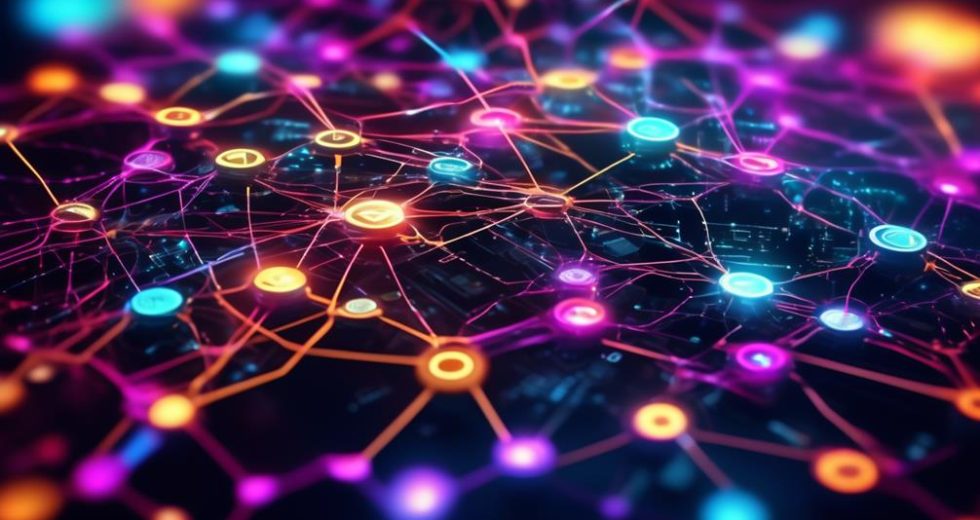
The internet has come a long way since its inception, and with the advent of Web 3.0, a new era of possibilities has emerged.
But what exactly is Web 3.0, and why should every entrepreneur be ready for it?
The concept of Web 3.0 represents a transformative shift in the way we interact with the internet, offering personalized and context-aware experiences that go beyond anything we've seen before.
From highly relevant search results to intelligent applications and seamless connectivity, Web 3.0 opens up a world of business opportunities.
In this article, we will explore the fundamentals of Web 3.0, the advantages of being prepared for it, and the promising future it holds.
So, let's dive into this evolving landscape and discover why every entrepreneur should be Web 3.0 ready.
Key Takeaways
- Web 3.0 offers personalized, context-aware, and precise responses to manage time spent on the web.
- It delivers more relevant search results and offers tools for better information management.
- Web 3.0 is highly interactive and provides a personalized user experience.
- It utilizes technologies like blockchain and P2P networks for new ways of handling and interacting with data.
Understanding Web 3.0 Basics
What are the fundamental concepts and principles of Web 3.0?
Web 3.0 is characterized by its impact on user experience and the development of new applications. It introduces a range of features and advantages that enhance the way users interact with the web.
Web 3.0 contextualizes information based on user needs and offers personalized, context-aware responses. It goes beyond keyword-based search and considers specific search parameters, providing more targeted and relevant results.
Web 3.0 also offers a highly interactive and personalized user experience, recording and storing information accurately. It leverages technologies like RDF, SWRL, OWL, SPARQL, and GRDDL to make the web more intelligent and semantic.
Furthermore, Web 3.0 utilizes blockchain and P2P networks to handle and interact with data in new ways, enhancing internet accessibility and transforming the web into a seamless and interoperable network.
The Advantages of Being Web 3.0 Ready
Being prepared for Web 3.0 offers entrepreneurs numerous advantages in terms of enhanced user experience, increased efficiency, and new business opportunities.
The benefits of being Web 3.0 ready are substantial. Firstly, it enables entrepreneurs to provide a more personalized and context-aware user experience. By leveraging technologies like AI and machine learning, businesses can deliver highly targeted and relevant information to their users, improving satisfaction and engagement.
Secondly, Web 3.0 allows for increased efficiency in data management and processing. With the ability to interpret context and understand user needs, entrepreneurs can streamline their operations and optimize resource allocation.
Lastly, being Web 3.0 ready opens up new business opportunities. Entrepreneurs can leverage the advancements in technology and tap into emerging markets, creating innovative products and services that cater to the evolving needs of users.
Business Opportunities in the Web 3.0 Era
With the advancements in Web 3.0, entrepreneurs have unprecedented business opportunities to capitalize on the evolving digital landscape. Web 3.0 use cases offer a wide range of possibilities for entrepreneurs to explore and leverage.
One of the key areas where Web 3.0 has a significant impact is marketing. With Web 3.0, marketing becomes more personalized and context-aware, allowing businesses to deliver targeted and relevant content to their audience. This leads to better engagement and conversion rates.
Additionally, Web 3.0 enables new forms of marketing such as influencer marketing, where influencers can directly interact and transact with their followers using blockchain-based platforms.
Moreover, Web 3.0 opens up opportunities for entrepreneurs to develop innovative products and services that leverage the power of decentralized networks and smart contracts.
The Future of Web 3.0
The future of Web 3.0 holds immense potential for revolutionizing the way we interact with technology and reshape the digital landscape. However, it also comes with its fair share of challenges and limitations. One of the major concerns is the impact on user privacy. With Web 3.0's increased focus on personalization and context-aware responses, there is a need for careful handling of user data to ensure privacy protection. Another challenge is the need for robust infrastructure and network capabilities to support the advanced features of Web 3.0. As we move towards a more connected and intelligent web, addressing these challenges will be crucial for the successful implementation and adoption of Web 3.0.
| Web 3.0 Challenges and Limitations | Web 3.0 Impact on User Privacy | Infrastructure and Network Capabilities |
|---|---|---|
| – Privacy concerns | – Personalized experiences | – Need for robust infrastructure |
| – Data handling and security | – Context-aware responses | – Advanced network capabilities |
| – Trust and transparency | – Data privacy regulations | – Scalability and reliability |
Insights From Aashesh Shaah – CEO at Fusion Informatics
Aashesh Shaah, the CEO of Fusion Informatics, offers valuable insights into the potential of Web 3.0 and its impact on businesses in the digital era.
According to Shaah, successful implementation strategies for Web 3.0 involve understanding the changing user behavior and expectations. He emphasizes the need for businesses to provide personalized and context-aware experiences to users.
Shaah highlights that Web 3.0 enables businesses to leverage technologies like AI, ML, IoT, and Blockchain to create highly interactive and tailored experiences. He also emphasizes the importance of data management and accuracy in the Web 3.0 era.
Shaah believes that businesses should focus on building robust data infrastructure and implementing intelligent applications to take full advantage of the capabilities offered by Web 3.0.
Frequently Asked Questions
What Are the Key Technologies and Protocols That Power Web 3.0?
Key technologies and protocols that power Web 3.0 include blockchain-based solutions, decentralized applications (dApps), smart contracts, peer-to-peer (P2P) networks, and interoperable data formats. These technologies enable a more secure, decentralized, and user-centric web experience.
How Does Web 3.0 Improve Communication Effectiveness and User Productivity?
Web 3.0 improves communication effectiveness and user productivity by enhancing collaboration and enhancing the user experience. It leverages technologies like AI, ML, and IoT to provide seamless and interactive platforms that facilitate efficient communication and streamline work processes.
What Are Some Potential Business Models That Can Be Supported by Web 3.0?
Some potential business models that can be supported by Web 3.0 include decentralized finance and tokenized assets. These models leverage the power of blockchain technology to create new financial systems and enable the digitization of real-world assets for increased accessibility and efficiency.
How Does Web 3.0 Leverage Mobile Capabilities and Develop New Interfaces?
Web 3.0 leverages mobile capabilities by integrating mobile devices into its network. It develops new interfaces that optimize the user experience on mobile platforms, making information more accessible and interactions seamless.
What Are the Challenges That Need to Be Overcome for Web 3.0 to Reach Its Full Potential?
Challenges that need to be overcome for Web 3.0 to reach its full potential include privacy concerns, infrastructure limitations, and ensuring seamless interoperability. However, these challenges also present opportunities for innovation, improved communication, and enhanced user experiences.
Conclusion
In conclusion, embracing the transformative paradigm of Web 3.0 is essential for every entrepreneur. It offers a range of new features and advantages, such as highly relevant search results, personalized user experiences, and enhanced customer experiences.
Web 3.0 also presents numerous business opportunities, including increased reach and speed, as well as new revenue models. Furthermore, the future possibilities of Web 3.0 hold the promise of even more advanced communication between humans, machines, and objects.
Entrepreneurs who are Web 3.0 ready will be well-positioned to thrive in the evolving digital landscape.
Knowledge Graphs: The Dream of a Knowledge Network

Knowledge graphs have revolutionized the field of artificial intelligence and data management, offering a unique approach that combines semantic technology with static machine learning. These graphs have the potential to continuously learn and adapt, making them distinct from traditional machine learning methods.
By seamlessly integrating public resources with private corporate data, knowledge graphs bridge the gap between business expertise and application. Moreover, they act as semantic glue, consolidating information across different systems and enabling efficient situation management.
In this discussion, we will explore the benefits, potential business scenarios, and the future potential of knowledge graphs, revealing why they are hailed as the dream of a knowledge network.
Key Takeaways
- Hybrid AI combines semantic technology (knowledge graphs) and static machine learning, allowing for continuous learning and up-to-date information.
- Knowledge graphs have the potential to combine private corporate data with public data, enabling integration and composition of data models and applications.
- Knowledge graphs act as semantic glue, linking up data silos and consolidating data across different products and systems.
- The Explore Related Situations app, based on a advanced knowledge graph at SAP, helps users navigate related situations and make informed decisions, enabling efficient situation management.
Hybrid AI and Knowledge Graphs
Hybrid AI leverages the power of semantic technology and knowledge graphs to create a dynamic and continuously learning machine learning system.
By integrating machine learning with knowledge graphs, Hybrid AI enables continuous learning and adaptation to new data.
Unlike classical machine learning methods that rely on existing databases, knowledge graphs allow for the addition of new data at any time, ensuring the system stays up-to-date.
This integration of machine learning and knowledge graphs enables the system to continuously learn and improve its performance over time.
However, designing knowledge graphs can be complex and requires semantic accuracy.
Nevertheless, the benefits of this integration are significant, as it allows for the creation of a machine learning system that can learn from new data and adapt its models accordingly, leading to more accurate and effective results.
Decoupling Business Expertise and Application
With the integration of knowledge graphs and semantic technology in Hybrid AI, businesses can now separate their expertise from their applications, allowing for the seamless combination of private corporate data with public data. This decoupling of business expertise and application is made possible through collaborative modeling and public private data integration. Knowledge graphs serve as the bridge between these two realms, enabling the integration and composition of data models and applications. They act as the semantic glue, linking up data silos and consolidating data across different products and data silos. By storing and linking metadata separately from the data in applications' tables, knowledge graphs enable gradual rollout and extension of data models. This approach not only facilitates efficient and effective situation management but also empowers businesses to leverage the full potential of their data assets.
| Collaborative Modeling | Public Private Data Integration | Knowledge Graphs |
|---|---|---|
| Enables teamwork and knowledge sharing among experts | Facilitates the combination of private corporate data with public data | Acts as a bridge between business expertise and applications |
| Enhances the accuracy and completeness of data models | Allows for the seamless integration and composition of data models and applications | Links up data silos and consolidates data across different products and data silos |
| Promotes a more efficient and effective decision-making process | Enables businesses to leverage the full potential of their data assets | Stores and links metadata separately from the data in applications' tables |
| Facilitates the gradual rollout and extension of data models | Provides better search capabilities and contextualized results | Serves as the semantic glue, connecting disparate data sources |
| Supports the development of a more ubiquitous language | Enables the implementation of various scenarios like knowledge and data management, chatbots, and fraud detection | Keeps data models up-to-date and continuously learning |
Semantic Glue – Integration by Design
Knowledge graphs act as a vital component of integration by design, serving as the semantic glue that connects and consolidates data silos. Graphs function as data connectors, enabling the seamless flow of information between various systems and applications.
They excel in scenarios that involve calculating the shortest route or associating specific materials. With their ability to store and link metadata separately from the data in applications' tables, graphs consolidate data across different products and data silos. This semantic interoperability allows for the gradual rollout and extension of data models, providing flexibility and scalability.
The Situation Knowledge Graph
The seamless integration provided by knowledge graphs as the semantic glue extends to the advanced knowledge graph utilized in SAP's Explore Related Situations app. This app, part of the Intelligent Situation Automation service on SAP Business Technology Platform, enables users to navigate related situations and make informed decisions. The knowledge graph serves as the foundation for efficient and effective situation management in SAP S/4HANA.
- The app leverages the knowledge graph to consolidate and organize relevant data for each situation.
- Users can easily explore and understand the relationships between different situations.
- The knowledge graph enables quick access to relevant information, improving the efficiency of situation management.
Benefits of Knowledge Graphs
Knowledge graph technologies offer a multitude of benefits across various domains, revolutionizing the way businesses model scenarios, enhance search capabilities, and improve decision-making processes.
One of the key benefits of knowledge graphs is improved decision-making. By organizing and connecting vast amounts of data, knowledge graphs provide a comprehensive and holistic view of information, enabling businesses to make informed decisions based on accurate and up-to-date insights.
Additionally, knowledge graphs facilitate enhanced data integration by consolidating data from various sources and breaking down data silos. This integration enables businesses to have a unified and coherent understanding of their data, leading to improved efficiency and productivity.
Knowledge Graphs in Business Scenarios
How can knowledge graphs be effectively utilized in various business scenarios to drive innovation and enhance decision-making processes?
- Data integration:
- Knowledge graphs act as a semantic glue, linking up data silos.
- Graphs consolidate data across different products and data silos.
- Graphs enable the integration and composition of data models and applications.
- Data visualization:
- Graphs can store and link metadata separately from the data in applications' tables.
- Graphs excel in scenarios like calculating the shortest route or associating specific materials.
- Knowledge graphs enable better search capabilities and contextualized results.
In business scenarios, knowledge graphs offer the potential to revolutionize data integration and visualization. By acting as a semantic glue, graphs can link disparate data silos, enabling the consolidation of data from different sources. Additionally, graphs allow for the integration and composition of data models and applications, facilitating seamless data integration.
Furthermore, knowledge graphs excel in scenarios that require complex calculations or associations, such as finding the shortest route or identifying specific materials. Finally, knowledge graphs enable improved search capabilities and contextualized results, enhancing decision-making processes in various business scenarios.
Future Potential of Knowledge Graphs
In light of the transformative impact knowledge graphs have demonstrated in business scenarios, their future potential is poised to revolutionize data-driven decision-making processes across industries.
With their ability to integrate and connect vast amounts of data from various sources, knowledge graphs hold promise for emerging applications and improved decision-making.
By consolidating data across different products and data silos, knowledge graphs can provide a comprehensive and contextualized view of information, enabling organizations to make more informed and strategic choices.
Additionally, knowledge graphs facilitate the modeling of complex business scenarios and capture the expertise of business experts through constraints and vocabularies.
As the technology continues to evolve, knowledge graphs are expected to play a pivotal role in driving innovation and enabling organizations to extract valuable insights from their data.
Frequently Asked Questions
How Does Hybrid AI Combine Semantic Technology and Static Machine Learning?
Hybrid AI combines semantic technology and static machine learning to enable advanced data analysis and decision making. By integrating knowledge graphs with existing databases, hybrid AI continuously learns and stays up-to-date, enhancing the efficiency and effectiveness of data-driven processes.
What Is the Advantage of Knowledge Graphs in Terms of Keeping Data Up-To-Date?
Advantages of knowledge graphs in terms of keeping data up to date include real-time updates and automated data integration. This ensures that new data can be added at any time, keeping the knowledge graph current and continuously learning.
How Can Private Corporate Data Be Combined With Public Data Using Knowledge Graphs?
Private corporate data can be combined with public data through knowledge graphs, enabling data integration and enrichment. Knowledge graphs serve as a semantic glue, linking up different sources of information, allowing for a more comprehensive and contextualized understanding of data.
How Do Knowledge Graphs Act as Semantic Glue?
Knowledge graphs act as semantic glue in the knowledge network, linking and consolidating data silos. By storing and linking metadata separately from application data, they enable efficient integration and composition of data models, facilitating better search capabilities and contextualized results.
What Is the Role of Knowledge Graphs in Situation Handling in SAP S/4hana?
Knowledge graphs play a crucial role in situation handling in SAP S/4HANA. They enable efficient and effective management by providing an advanced knowledge graph that aids users in navigating related situations and making informed decisions.
Conclusion
In conclusion, knowledge graphs offer a powerful solution for bridging the gap between business expertise and application. They consolidate data across various systems and enable efficient situation management.
Their ability to continuously learn and adapt, combined with their integration with public resources, makes them a valuable tool in the realm of artificial intelligence and data management.
With their wide range of benefits and future potential, knowledge graphs are poised to revolutionize knowledge and data management in various industries.
As the saying goes, 'Knowledge graphs are the threads that weave a comprehensive tapestry of information, unlocking hidden insights and empowering organizations to make informed decisions.'
Intro to JSON-LD: JSON for the Semantic Web

As the web continues to evolve, so does the need for more advanced data representation formats. Enter JSON-LD, a powerful extension of the JSON format that aims to bridge the gap between traditional JSON and the semantic web.
But what exactly is JSON-LD and why is it important in the context of the semantic web? In this discussion, we will explore the background of JSON-LD, its applications in client-server setups, the role of @Context and @Type fields, the expand and compact operations, the benefits of using JSON-LD, its significance in the semantic web, and its implementation in knowledge graphs and search engine optimization.
So, let's embark on this journey together and uncover the potential of JSON-LD in creating a more meaningful and interconnected web.
Key Takeaways
- JSON-LD extends the JSON format to include linking information.
- JSON-LD allows for self-describing hypermedia and maintains loose coupling between server and client.
- JSON-LD can be used in client-server applications to serve structured data and enable navigation through interrelated data.
- The @Context and @Type fields in JSON-LD provide additional semantic information, establishing relationships and defining the structure of the data.
Background of JSON-LD
JSON-LD, an extension of the JSON format, plays a pivotal role in the semantic web by allowing for the inclusion of linking information. It addresses the implementation challenges faced by other semantic web formats.
Unlike XML-based formats like RDF/XML, JSON-LD leverages the familiarity and simplicity of JSON, making it easier for developers to work with. Additionally, JSON-LD provides a compact and readable representation of data, making it more efficient for transmission over the web.
It also offers interoperability with existing JSON-based APIs, enabling seamless integration with existing systems. Compared to other semantic web formats, JSON-LD provides a more flexible and lightweight solution.
Applications of JSON-LD in Client-Server Setups
In client-server setups, JSON-LD finds extensive applications for serving structured data and enabling navigation through interrelated information.
Some notable applications of JSON-LD in client-server setups include:
- JSON-LD in e-commerce applications: JSON-LD allows for the seamless integration of product information and metadata, making it easier for e-commerce platforms to display and process product data. It enables better categorization, filtering, and searching of products, enhancing the overall user experience.
- JSON-LD for data visualization: JSON-LD can be used to represent complex data structures in a standardized format, making it easier to visualize and analyze data. It allows for the creation of interactive and dynamic visualizations, simplifying the interpretation and exploration of data.
- JSON-LD for creating dynamic client-server setups: JSON-LD enables the creation of flexible and dynamic client-server setups by providing a standardized way to define and navigate interrelated data. It allows clients to query and retrieve specific information based on their needs, making the overall system more efficient and user-friendly.
Role of @Context and @Type Fields in JSON-LD
The @Context and @Type fields play a crucial role in JSON-LD by providing additional semantic information and defining the structure of the data.
The @Context field allows developers to define the context in which the data is interpreted, enabling the data to be understood in a specific way. This is particularly useful when integrating data from different sources or when working with complex data structures.
The @Type field, on the other hand, specifies the type of the data, allowing for better understanding and interpretation. It helps in establishing relationships and defining the structure of the data.
The @Context and @Type fields are essential for creating a self-describing and interconnected web. They enable better data integration, sharing, and interpretation.
However, implementing JSON-LD in client-server applications can present challenges, such as ensuring that the server provides the necessary context information and that the client is able to interpret it correctly.
Expand and Compact Operations in JSON-LD
To further explore the capabilities of JSON-LD, the expand and compact operations provide essential mechanisms for transforming and optimizing the representation of JSON-LD data. These operations offer several advantages and use cases:
- Use cases:
- Data integration: Expand and compact operations allow for easy integration of JSON-LD data from different sources by converting it into a common format.
- Data optimization: Compact operation reduces redundancy and makes the JSON-LD data more concise, improving efficiency and reducing storage requirements.
- Interoperability: Expand operation allows JSON-LD data to be converted into a more verbose and fully expanded form, making it easier to understand and interpret by different systems.
- Advantages:
- Improved data representation: The expand and compact operations enable better representation of JSON-LD data, making it easier to work with and analyze.
- Enhanced interoperability: These operations facilitate seamless data exchange between different platforms and systems, promoting interoperability.
- Increased efficiency: Compact operation reduces the size of JSON-LD data, leading to faster transmission and processing times.
Benefits of Using JSON-LD
JSON-LD offers numerous benefits for data integration, interoperability, and enhanced representation in the semantic web. Its advantages in web development are evident through its ability to simplify data interpretation for both humans and machines.
JSON-LD enables interoperability between different systems and platforms, facilitating seamless data integration and sharing among applications. Moreover, the use of semantic metadata in JSON-LD improves search engine optimization, enhancing the visibility and discoverability of web content.
This has a significant impact on data interoperability as it allows for easier development of intelligent applications and services that can leverage the structured data. Overall, JSON-LD plays a vital role in bridging the gap between different data sources and systems, promoting better collaboration and communication in the digital ecosystem.
JSON-LD and Its Significance in the Semantic Web
With its ability to simplify data interpretation and enhance interoperability between different systems and platforms, JSON-LD plays a pivotal role in bridging the gap between various data sources and systems, fostering better collaboration and communication in the digital ecosystem.
- JSON-LD enables the integration of semantic web applications, allowing for better understanding and interpretation of data in knowledge graphs.
- It provides a standardized format for representing data, making it easier for different systems to exchange and process information.
- JSON-LD allows for the creation of self-describing data, where the meaning and context of the data are explicitly defined, improving data interoperability and integration.
Implementation of JSON-LD in Knowledge Graphs
The implementation of JSON-LD in knowledge graphs allows for the seamless integration and representation of structured data within the semantic web ecosystem. Knowledge graphs utilize JSON-LD to organize and connect information in a meaningful way, enabling efficient data retrieval and analysis. However, there are implementation challenges involved in incorporating JSON-LD into knowledge graphs. One challenge is the need for mapping existing data to the JSON-LD format, which can be time-consuming and complex. Another challenge is the comparison with other data formats, such as RDF, which may require additional transformations and adaptations. Despite these challenges, JSON-LD offers several advantages over other data formats. It provides a standardized and interoperable data representation, making it easier to exchange and integrate data across different systems. Additionally, JSON-LD allows for the inclusion of context and type information, enhancing the semantic understanding of the data.
| Implementation Challenges | Comparison with Other Data Formats |
|---|---|
| Mapping existing data | Additional transformations |
| Time-consuming and complex | Adaptations required |
| Standardized and interoperable | |
| Easier data exchange and integration | |
| Enhanced semantic understanding |
JSON-LD for Improved SEO and Data Integration
The application of JSON-LD in knowledge graphs not only enables efficient data retrieval and analysis but also provides significant benefits for improved SEO and data integration in the semantic web ecosystem.
JSON-LD's integration with search engine optimization (SEO) techniques allows for better visibility and indexing of content on the web. Its structured data format enhances search engines' understanding of website content, leading to improved search engine rankings and visibility.
Additionally, JSON-LD facilitates data integration by providing a standardized and interoperable format for exchanging data between different applications and platforms. It promotes seamless data integration and sharing, allowing for better collaboration and information exchange.
With JSON-LD, developers can easily connect and integrate data from various sources, creating a unified and comprehensive view of information for improved decision-making and analysis.
Frequently Asked Questions
How Does JSON-LD Impact the Performance of Client-Server Applications?
Performance considerations of JSON-LD in client-server applications involve optimizing it for efficient data transfer in a client-server architecture. This includes minimizing the size of JSON-LD payloads, reducing network latency, and improving overall response time for better application performance.
Can JSON-LD Be Used in Mobile Applications?
Yes, JSON-LD can be used in mobile app development to enhance performance. By leveraging its structured data capabilities, JSON-LD enables efficient data interchange and integration, resulting in faster and more optimized mobile applications.
Are There Any Limitations or Drawbacks to Using JSON-LD in a Client-Server Setup?
There are some limitations to using JSON-LD in a client-server setup. One limitation is the potential for scalability issues, as the expanded form of JSON-LD can be larger in size. Additionally, the complexity of managing and interpreting the @Context and @Type fields may pose challenges.
How Does JSON-LD Handle Security and Authentication in a Client-Server Application?
JSON-LD provides a flexible framework for implementing security measures and authentication protocols in client-server applications. With its ability to incorporate contextual information, JSON-LD enables the secure transmission and verification of data, ensuring the integrity and confidentiality of information exchanged between the server and the client.
What Are Some Real-World Examples of Companies or Organizations Using JSON-LD in Their Applications?
Real-world examples of companies and organizations using JSON-LD in their applications include Google, which utilizes JSON-LD for structured data in search results. JSON-LD's benefits include improved interoperability, data integration, and simplified interpretation for humans and machines.
Conclusion
In conclusion, JSON-LD has emerged as a powerful tool in the semantic web. It offers structured data representation and seamless integration with various domains. By incorporating linking information and allowing for self-describing hypermedia, JSON-LD enables dynamic rendering and interaction with services.
Its use in knowledge graphs and search engine optimization further enhances the interconnectedness and meaningfulness of the web. For instance, a hypothetical case study could involve a knowledge graph using JSON-LD to integrate data from various sources. This integration would provide comprehensive and interactive insights on a particular subject.
What Is Web 3.0? From Semantic Web to Blockchain, Learn About the Developing Tech Behind Future of I

Web 3.0, the next frontier of the internet, represents a transformative shift towards a more intelligent and decentralized digital landscape.
From the semantic web's goal of enabling machines to understand online content to the disruptive potential of blockchain technology, Web 3.0 is poised to revolutionize how we interact with and leverage the internet.
By exploring the components that underpin Web 3.0 and delving into real-world examples of its applications, we can gain a deeper understanding of its impact and the exciting opportunities it presents for innovation and advancement.
Key Takeaways
- Web 3.0 introduces intelligence through machine learning and AI, revolutionizing socializing, working, and playing in the metaverse.
- The integration of machine learning and the semantic web leads to more accurate and relevant results, but challenges include high-quality and standardized data.
- Blockchain implementation in web 3.0 offers enhanced security, immutability, and transparency, paving the way for a more user-centric internet.
- Web 3.0 applications provide personalized recommendations, decentralized marketplaces, and tailored content, driving the future of the internet.
Web 3.0 Vs Web 2.0
When comparing Web 3.0 to its predecessor, Web 2.0, significant differences can be observed in terms of functionality, intelligence, and decentralization.
Web 3.0 introduces a new level of intelligence by leveraging technologies such as machine learning and artificial intelligence. This enables the internet to understand and interpret data, providing users with more accurate and personalized search results.
Additionally, Web 3.0 embraces decentralization, eliminating the need for intermediaries and enabling direct peer-to-peer interactions. This has implications for increased privacy, security, and transparency.
Advantages of Web 3.0 include optimized search results and services, as well as the potential for new ways of socializing, working, and playing in the metaverse.
Semantic Web and Machine Learning
The integration of machine learning and the semantic web is revolutionizing the way content is understood and processed on the internet. By combining the power of machine learning algorithms with the structured and labeled data of the semantic web, web 3.0 applications are able to provide more accurate and relevant results to users. However, there are potential challenges in implementing the semantic web and machine learning. These include the need for high-quality and standardized data, as well as the complexity of developing and training machine learning models. Additionally, ethical considerations arise in the use of machine learning in web 3.0 applications. Issues such as bias, privacy, and transparency need to be carefully addressed to ensure fair and responsible use of these technologies.
| Challenges in Implementing Semantic Web and Machine Learning | Ethical Considerations in the use of Machine Learning in Web 3.0 Applications |
|---|---|
| High-quality and standardized data | Bias in algorithms |
| Complexity of developing and training machine learning models | Privacy concerns |
| Integration of different technologies and systems | Transparency and accountability |
Blockchain and Decentralization
The integration of blockchain technology and the concept of decentralization is reshaping the landscape of web 3.0, addressing key challenges and ethical considerations while paving the way for a more secure, transparent, and user-centric internet.
Blockchain implementation in web 3.0 offers numerous advantages, such as enhanced security, immutability, and transparency. By using a decentralized network, blockchain eliminates the need for intermediaries, allowing for direct peer-to-peer transactions and interactions. This not only reduces costs but also increases efficiency and trust.
Additionally, decentralization ensures that power is not concentrated in the hands of a few organizations or individuals, promoting a more democratic and inclusive internet.
With blockchain and decentralization at its core, web 3.0 has the potential to revolutionize various industries and create new opportunities for innovation.
Web 3.0 Applications
Web 3.0 applications encompass a wide range of innovative technologies and platforms that are reshaping the way we interact, transact, and access information on the internet. These applications offer personalized recommendations and explore the exciting possibilities of the metaverse.
Here are three key aspects of Web 3.0 applications:
- Personalized recommendations: Web 3.0 leverages advanced algorithms and user data to provide personalized recommendations for users. This enables tailored content, products, and services that align with individual preferences, enhancing the overall user experience.
- Metaverse possibilities: Web 3.0 opens up new avenues for socializing, working, and playing in the metaverse. It enables immersive virtual environments where users can interact, create, and explore. This has the potential to revolutionize various industries, including gaming, entertainment, and virtual reality.
- Decentralized marketplaces: Web 3.0 applications facilitate decentralized marketplaces, eliminating the need for intermediaries. Users can directly buy and sell goods and services, ensuring transparency, security, and autonomy.
These Web 3.0 applications are driving the future of the internet, offering personalized experiences and unlocking the potential of the metaverse.
Impact and Future of Web 3.0
As Web 3.0 applications continue to reshape the internet landscape, its impact and future possibilities are becoming increasingly significant.
However, the adoption of Web 3.0 technologies may face potential challenges and obstacles. One such challenge is the need for widespread adoption and understanding of these technologies. Educating users and businesses about the benefits and functionalities of Web 3.0 will be crucial for its success.
Additionally, the ethical considerations and implications of Web 3.0 technologies must be carefully examined. Issues such as privacy, security, and the fair distribution of power and wealth in a decentralized system will need to be addressed. Moreover, regulatory frameworks will need to be developed to ensure the responsible and ethical use of these technologies.
Despite these challenges, the future of Web 3.0 holds immense possibilities for innovation, improved user experiences, and the transformation of various industries.
Frequently Asked Questions
How Does Web 3.0 Differ From Previous Versions of the Internet?
Web 3.0 differs from previous versions of the internet by emphasizing intelligence, connectivity, and decentralization. It leverages technologies like machine learning and blockchain to provide personalized services, eliminate intermediaries, and optimize search results, revolutionizing the internet.
What Are Some Examples of Machine Learning Applications in Web 3.0?
Machine learning applications in Web 3.0 involve the integration of AI to enhance various aspects of the internet. Examples include personalized search engines, data analysis for relevant results, and the development of decentralized marketplaces, revolutionizing the online experience.
How Does Blockchain Technology Contribute to Decentralization in Web 3.0?
Blockchain technology contributes to decentralization in Web 3.0 by eliminating the need for central authorities. It enables the creation of decentralized applications and platforms, allowing users to have full control over their data and transactions. The benefits of decentralization include increased security, transparency, and censorship resistance.
Can You Provide More Details About the Potential Social and Economic Impacts of Web 3.0?
The potential social implications of Web 3.0 include increased decentralization and elimination of intermediaries, leading to greater autonomy for individuals. Economically, Web 3.0 could disrupt traditional industries, create new opportunities, and enable innovative business models.
What Are Some Potential Challenges or Risks Associated With the Development of Web 3.0?
The development of Web 3.0 presents potential challenges and security risks. These include issues related to scalability, interoperability, privacy, data ownership, and trust. It is crucial to address these concerns to ensure a safe and sustainable future for the internet.
Conclusion
In conclusion, Web 3.0 represents the future of the internet, offering a more intelligent, connected, and decentralized digital landscape.
By combining the semantic web, machine learning, and blockchain technology, Web 3.0 aims to optimize the internet by enabling machines to understand and interpret content, providing secure and decentralized storage, and unlocking new possibilities for applications and services.
As Web 3.0 continues to evolve, it presents exciting opportunities for innovation and advancements, much like a seed that blossoms into a vibrant garden of possibilities.
Semantic Web Market to Reach 123.5 Billion, by 2032 at 42.4% CAGR: Allied Market Research

The exponential growth projected for the global semantic web market is capturing the attention of industry experts and businesses alike. With an estimated value of $123.5 billion by 2032, at an impressive CAGR of 42.4% from 2023 to 2032, it is evident that this market holds significant potential.
The rising adoption of data management solutions, coupled with the increasing utilization of the semantic web in businesses, has propelled its expansion. Moreover, the integration of AI, ML, and IoT technologies has further fueled market growth, presenting lucrative opportunities in various sectors.
However, challenges surrounding data quality, standardization errors, and data security and privacy concerns pose potential roadblocks to this thriving industry.
As we delve deeper into the dynamics of the semantic web market, it becomes clear that understanding its drivers, restraints, and market segmentation is crucial to unlocking its promising prospects.
Key Takeaways
- The global semantic web market is expected to reach $123.5 billion by 2032, with a compound annual growth rate (CAGR) of 42.4% from 2023 to 2032.
- The rise in adoption of data management solutions and integration of AI and ML technologies are driving the growth of the semantic web market.
- Data quality and standardization errors, as well as data security and privacy concerns, pose challenges to the growth of the market.
- The solution segment holds the highest market share in 2022, and the public deployment type accounted for the largest share in the same year.
Growth Drivers in the Semantic Web Market
The Semantic Web market is experiencing significant growth, driven by various factors such as the rise in adoption of data management solutions and the increasing integration of AI, ML, and IoT technologies.
Adoption trends in the semantic web market indicate a growing recognition of the value and potential of semantic web technology in improving data management and processing capabilities. Organizations across various industries are leveraging semantic web solutions to enhance their data-driven decision-making processes and improve overall operational efficiency.
Additionally, emerging applications of semantic web technology, such as in natural language processing, knowledge graphs, and intelligent search, are further fueling the market growth.
The semantic web market is witnessing a surge in demand as businesses seek to leverage its potential to extract meaningful insights from vast amounts of complex data, ultimately driving innovation and competitive advantage.
Restraints and Challenges Faced by the Semantic Web Market
Despite its significant growth and potential, the Semantic Web market faces several restraints and challenges that hinder its progress and adoption.
One of the key challenges is data security concerns. As the Semantic Web relies heavily on data integration and sharing, ensuring the security and privacy of sensitive information becomes crucial. Businesses and individuals may be reluctant to adopt Semantic Web technologies if they perceive a risk of data breaches or unauthorized access.
Additionally, data quality and standardization errors pose another challenge. The Semantic Web relies on accurate and standardized data to deliver meaningful insights and enable interoperability. However, inconsistencies and errors in data quality can undermine the effectiveness and reliability of Semantic Web applications.
These challenges related to data security concerns and data quality impede the growth and widespread adoption of the Semantic Web market.
Market Segmentation of the Semantic Web Market
Data security concerns and data quality issues are key challenges faced by the Semantic Web market. Despite these obstacles, understanding the market segmentation is crucial for identifying growth opportunities and targeting specific industry verticals.
The market segmentation of the Semantic Web market includes several key factors. Firstly, the component segment is divided into solutions and services. Secondly, the deployment type segment is categorized into public, private, and hybrid. Thirdly, the enterprise size segment consists of large enterprises and small and medium-sized enterprises. Fourthly, the industry vertical segment encompasses BFSI, IT and Telecom, Retail and E-commerce, Healthcare and Life Science, Media and Publishing, Government and Public Sector, Education, and Others. Lastly, the regional segment includes North America, Asia-Pacific, Europe, and the Rest of the World.
These market segments provide insights into the diverse needs and preferences of different industries, allowing companies to tailor their products and services accordingly.
Emerging trends in the semantic web market, such as the integration of AI and ML technologies, are also impacting the market segmentation, opening up new growth opportunities for businesses.
Key Findings in the Semantic Web Market
With a projected CAGR of 42.4% from 2023 to 2032, the Semantic Web market is expected to witness significant growth in the coming years. The market trends in the semantic web industry indicate the rising adoption of data management solutions and the integration of AI and ML technologies. These emerging technologies are impacting the semantic web market by enhancing data processing capabilities and enabling intelligent decision-making.
Additionally, the implementation of IoT technology is also driving the growth of the semantic web market, particularly in industries such as smart lighting and smart city projects. As a result, the semantic web industry generated $3.7 billion in 2022 and is anticipated to reach $123.5 billion by 2032.
The solution segment currently holds the highest market share, and the public segment accounted for the largest share in 2022.
Key Players and Strategies in the Semantic Web Market
The Semantic Web market is populated by several key players who employ various strategies to stay competitive and drive growth in the industry. These players include Franz Inc., Microsoft Corporation, NetBase Solutions Inc., Ontotext, and OpenLink Software Inc.
To maintain their market share and competitive scenario, these key players adopt strategies such as new product launches, collaborations, expansions, joint ventures, and agreements. They focus on developing innovative solutions and services to overcome data security and privacy concerns in the semantic web market.
Frequently Asked Questions
What Is the Current Market Size of the Semantic Web Industry?
The current market size of the semantic web industry is not explicitly mentioned in the given information. However, according to Allied Market Research, the semantic web market is projected to reach $123.5 billion by 2032, with a CAGR of 42.4%.
What Is the Projected Market Size of the Semantic Web Industry by 2032?
By 2032, the projected market size of the semantic web industry is expected to reach $123.5 billion, with a compound annual growth rate (CAGR) of 42.4%. This growth is driven by emerging trends and the increasing adoption of semantic web technology in various industries.
Which Segment Held the Highest Market Share in the Semantic Web Industry in 2022?
The segment that held the highest market share in the semantic web industry in 2022 was the solution segment. This indicates its strong performance and dominance in driving industry growth during that period.
What Is the Expected Compound Annual Growth Rate (Cagr) of the Semantic Web Market From 2023 to 2032?
The expected compound annual growth rate (CAGR) of the semantic web market from 2023 to 2032 is projected to be 42.4%. This growth rate reflects the increasing adoption of semantic web technologies and the potential for lucrative opportunities in the market. Market analysis suggests a promising future for the semantic web industry.
What Are the Key Strategies Adopted by Major Players in the Semantic Web Market?
The major players in the semantic web market adopt key strategies such as new product launches, collaborations, expansions, joint ventures, and agreements. These strategies help them navigate the emerging trends, competitive landscape, and market dynamics effectively.
Conclusion
In conclusion, the global semantic web market is expected to witness significant growth in the coming years. This growth will be driven by factors such as increasing adoption of data management solutions, growing demand for language processing and multilingual applications, and integration of AI, ML, and IoT technologies.
However, challenges related to data quality, security, and privacy need to be addressed. These challenges can potentially hinder the growth of the market and impact businesses operating in this space.
Despite these challenges, the semantic web market holds immense potential for businesses. With its promising prospects and lucrative opportunities, businesses should focus on overcoming these challenges to maximize their growth potential.
As the market expands, it will be crucial for businesses to stay ahead of the curve and adapt to the evolving landscape. This can be achieved by investing in research and development, fostering partnerships, and staying updated with the latest trends and technologies.
In summary, the global semantic web market is poised for growth, and businesses should seize the opportunities it presents. By addressing the challenges and staying innovative, businesses can position themselves for success in this rapidly evolving market.
Future of the Internet: Is It Decentralized and Web 3.0?

In an era where the internet has become an integral part of our lives, it is natural to question what lies ahead for this ever-evolving phenomenon. As we bid farewell to the age of Web 2.0 and its interactive platforms, a new vision known as Web 3.0 emerges on the horizon.
With promises of a more intelligent and personalized online experience, Web 3.0 envisions a decentralized future where power and control are distributed among users. At the heart of this paradigm shift is the concept of a Decentralized Web, supported by blockchain technology.
However, the journey towards this decentralized internet is not without its obstacles, including technological challenges and ethical considerations. Join us as we explore the potential of Web 3.0 and the implications it holds for the future of the internet.
Key Takeaways
- Web 3.0, also known as the Semantic Web, promises smarter search engines, advanced AI, and virtual assistants that better understand and satisfy user needs.
- The Decentralized Web, or Web3, envisions a future internet where power and control are distributed, addressing concerns about centralization by tech giants. Users own their data, and blockchain technology plays a key role in enhancing privacy and fostering innovation.
- Decentralization aims to distribute power and control more evenly, offering an alternative to centralized platforms. Users have control over who accesses their data, and blockchain technology creates secure and verifiable records without the need for a central authority.
- Implementing Web 3.0 and the Decentralized Web presents technological challenges, such as developing new protocols and improving blockchain scalability, as well as ethical and legal considerations related to cybercrime, accountability, surveillance, and manipulation. Balancing the benefits and challenges of these advancements is crucial.
Advancements in Web 2.0
With the rapid advancements in Web 2.0, the internet has transformed from static pages to dynamic applications, ushering in a new era of interactivity, social media platforms, and user-generated content. This shift has brought both benefits and drawbacks to the online world.
On the positive side, Web 2.0 allows for greater user engagement and collaboration. It enables individuals to express themselves creatively, share information, and connect with others globally. Moreover, businesses can leverage social media platforms to reach a wider audience and build brand loyalty.
However, there are concerns regarding privacy violations, data monopolies, and the spread of fake news. As we move towards Web 3.0, it is crucial to address these challenges and develop technologies that prioritize user empowerment and data privacy.
Features of Web 3.0
The advancements in Web 2.0 have paved the way for the emergence of Web 3.0, a paradigm that promises a futuristic, analytical, and insightful internet experience.
One of the key features of Web 3.0 is the integration of AI advancements, which revolutionize the way businesses operate. With the ability to process and analyze vast amounts of data, AI-powered algorithms can provide valuable insights and predictions, enabling businesses to make more informed decisions and optimize their operations.
Additionally, Web 3.0 allows for personalized and tailored user experiences, as AI algorithms can understand user preferences and provide relevant content and recommendations. This level of customization enhances user satisfaction and drives engagement.
Vision of the Decentralized Web
In envisioning the future of the internet, the Decentralized Web emerges as a powerful paradigm, revolutionizing the current centralized landscape and fostering a truly democratic and innovative digital ecosystem.
The benefits of decentralization are evident, as it allows users to have greater control over their data and eliminates the need for a central authority. Blockchain technology plays a pivotal role in building the Decentralized Web, offering enhanced privacy and fostering innovation. Its impact is far-reaching, as it creates secure and verifiable records, ensuring transparency and trust.
The Decentralized Web not only addresses concerns about centralization by tech giants but also paves the way for a more inclusive and equitable online experience. By distributing power and control more evenly, the Decentralized Web empowers users and enables a more open and collaborative digital environment.
Concept of Decentralization
Decentralization emerges as a transformative concept in the future of the internet, revolutionizing the current centralized landscape and empowering users with greater control and ownership over their data. This concept holds immense importance for user control and has a significant impact on data privacy.
Here are four key points to consider:
- User Control: Decentralization enables users to have greater control over their data. They can decide who accesses their information and have the power to revoke access if needed.
- Enhanced Privacy: Decentralization reduces the risk of data breaches and privacy violations. By distributing data across multiple nodes, it becomes harder for malicious actors to gain unauthorized access.
- Data Ownership: With decentralization, users have ownership of their data. They are not dependent on centralized platforms to store and control their information.
- Transparency: Blockchain technology, a crucial component of decentralization, provides secure and verifiable records. This transparency fosters trust and accountability in the digital realm.
Challenges in Implementing Web 3.0
Implementing Web 3.0 presents a myriad of challenges that must be overcome to realize its transformative potential in the future of the internet.
Technological hurdles are one of the primary challenges in achieving the vision of Web 3.0. The development of new protocols and improved blockchain scalability are crucial to ensure the seamless integration of decentralized technologies.
Additionally, adoption barriers pose significant challenges. Convincing users to embrace the decentralized web and understand the benefits of owning and controlling their data requires education and awareness campaigns. Overcoming the inertia of centralized platforms and their convenience is another adoption barrier that must be addressed.
Furthermore, ethical and legal considerations, such as cybercrime and accountability, need to be addressed to ensure the security and trustworthiness of Web 3.0.
Ethical and Legal Considerations
As the future of the internet unfolds, the realization of Web 3.0 and the decentralized web brings forth a crucial consideration: the ethical and legal implications that accompany this transformative paradigm shift.
The following are the key considerations in this regard:
- Cybersecurity implications: With the increased connectivity and openness of Web 3.0, ensuring robust cybersecurity measures becomes paramount. The decentralized nature of the web brings new challenges in protecting user data and preventing cybercrime.
- Data ownership: In the decentralized web, users have greater control over their data. However, this raises questions about who owns the data and how it can be used. Clear regulations and frameworks are needed to address issues of privacy, consent, and data monetization.
- Accountability: With the absence of centralized authorities, holding individuals and organizations accountable for their actions becomes more complex. Legal frameworks need to adapt to ensure that individuals and entities are held responsible for any harm caused in the decentralized web ecosystem.
- Ethical decision-making: As Web 3.0 enables advanced AI and machine learning algorithms, ethical considerations become crucial. The development and deployment of these technologies must be guided by ethical principles to prevent bias, discrimination, and other harmful consequences.
Navigating the ethical and legal landscape of Web 3.0 requires careful thought and proactive measures to address cybersecurity implications, ensure data ownership, establish accountability, and promote ethical decision-making.
Balancing Benefits and Challenges
Finding the equilibrium between the advantages and obstacles presented by Web 3.0 and the Decentralized Web requires careful consideration and strategic decision-making. On one hand, Web 3.0 offers exciting possibilities such as smarter search engines, advanced AI, and virtual assistants that better understand and satisfy user needs. It also promises enhanced privacy and fosters innovation through the use of blockchain technology. However, there are ethical implications to consider, such as the potential for increased surveillance and manipulation. Additionally, the implementation of Web 3.0 and the Decentralized Web presents technological challenges that need to be overcome, including the development of new protocols, improved blockchain scalability, and broad adoption. Balancing these benefits and challenges is crucial to ensure user empowerment while safeguarding privacy and accountability.
| Benefits | Challenges |
|---|---|
| Smarter search engines and advanced AI | Ethical implications of increased surveillance |
| Enhanced privacy and user ownership of data | Technological challenges in implementing Web 3.0 |
| Fosters innovation through blockchain technology | Legal considerations such as cybercrime and accountability |
| Better understanding and satisfaction of user needs | Potential for manipulation and misinformation |
| Distributed power and control, not concentrated in few platforms | Broad adoption and scalability of new protocols |
Frequently Asked Questions
How Does Web 3.0 Aim to Address Concerns About Privacy Violations and Data Monopolies?
Web 3.0 aims to address concerns about privacy violations and data monopolies by implementing privacy regulations and promoting data ownership. Through decentralized structures and blockchain technology, users have more control over their data, reducing the power of centralized platforms.
What Role Does Blockchain Technology Play in Building the Decentralized Web?
Blockchain technology plays a crucial role in building the decentralized web by providing secure and verifiable records, eliminating the need for a central authority. It offers enhanced privacy, fosters innovation, and has various applications in finance and supply chain management.
How Does the Concept of Decentralization Offer an Alternative to Centralized Platforms?
Decentralization offers an alternative to centralized platforms by redistributing power and control, empowering users to have ownership and control over their data. It promotes a vision of decentralized governance, fostering transparency and innovation in a more user-centric internet.
What Are the Technological Challenges in Implementing Web 3.0 and the Decentralized Web?
The implementation of Web 3.0 and the Decentralized Web faces technological challenges and implementation barriers. These include the need for new protocols, improved blockchain scalability, and widespread adoption. Addressing these challenges is crucial for realizing the vision of a decentralized internet.
What Potential Ethical and Legal Considerations Arise With the Advent of Web 3.0 and the Decentralized Web?
Ethical and legal implications arise with the advent of Web 3.0 and the Decentralized Web. These include concerns about cybercrime, accountability, increased surveillance, and manipulation. Balancing the benefits and challenges is crucial for the future of the internet.
Conclusion
In conclusion, the future of the internet lies in the decentralization and implementation of Web 3.0. This paradigm shift towards a more intelligent and personalized online experience holds immense potential for enhancing privacy, fostering innovation, and distributing power among users.
However, the realization of this vision comes with its own set of challenges, including technological hurdles and ethical considerations. The development of Web 3.0 requires advancements in areas such as artificial intelligence, machine learning, and data management. Additionally, concerns about data privacy and security need to be addressed to ensure that users have control over their personal information.
Nonetheless, with the increasing adoption of blockchain technology and the ongoing efforts towards a decentralized web, the future of the internet looks promising and transformative. The use of blockchain can provide a secure and transparent framework for data storage and transactions, while also enabling users to have greater control over their digital identities. Moreover, the decentralization of the internet can empower individuals and communities, giving them more autonomy and reducing the influence of centralized entities.
Overall, the future of the internet lies in the hands of those who are working towards the development and implementation of Web 3.0. By addressing the challenges and harnessing the potential of decentralized technologies, we can create a more inclusive, secure, and innovative online ecosystem.
Towards Machine Learning on the Semantic Web

Technological advances in the field of machine learning (ML) are opening up new opportunities for the Semantic Web. By combining machine learning techniques with fundamental principles related to artificial intelligence, the Semantic Web can be transformed into a smarter and more efficient platform for users.
In this article, we will explore how machine learning can be applied to the Semantic Web and what the benefits and challenges are.
What is the Semantic Web?
The Semantic Web is a concept that has gained considerable interest in recent years. It is a way to make website content more accessible by organizing and interpreting data.
This allows users to find relevant information on the web more quickly. The Semantic Web is an extension of the web itself and uses semantics to extract meaning from structural data. The Semantic Web is characterized by the implementation of a system of linked data and ontologies that can be defined as networks of relationships between different concepts, classes and properties.
These ontologies can be used to create links between specific objects or concepts, allowing for more accurate and efficient searching on the web. In addition, the Semantic Web offers developers a way to model and manage information consistently across multiple applications and services. This allows for better data sharing, searchability and visibility, which is useful for businesses looking to expand on the web.
Semantic Web technology also offers the opportunity to use machine learning to analyze web data and draw relevant conclusions. Machine learning can be applied to various fields such as finance, health, agriculture and many others.
It can also be used to extract information from existing models or to create new models from unstructured raw data. The results obtained can then be used to create more intelligent systems capable of making decisions based on the analysis of available data. The Semantic Web is an essential technology if we want to fully exploit the possibilities offered by machine learning on the web.
Indeed, it provides an ad hoc framework to organize data so that it can be used efficiently by artificial intelligence (AI) systems. Moreover, it allows AI technologies to increase their ability to take into account the specific contexts they are confronted with, thus offering greater variety and practicality to existing systems.
Finally, the Semantic Web is essential to maintain the quality of the content available on the web because it allows AI systems to perform a deep analysis of the available information and thus bring relevant content to Internet users. Thanks to the Semantic Web, developers can create more intelligent applications capable of providing users with a personalized service based on their specific needs.
What is machine learning?
Machine Learning (ML) is a branch of artificial intelligence that focuses on developing computer systems that can acquire knowledge from data and use that knowledge to solve complex problems.
In other words, ML focuses on creating algorithms that can learn from data and adapt to new conditions without being explicitly programmed. This technology has been widely used to perform complex tasks, such as medical diagnosis, automatic natural language processing and speech recognition.
Machine learning is generally divided into three main categories: supervised learning, unsupervised learning and reinforcement learning. Supervised learning uses algorithms to learn from labeled data, which means there is some sort of human teaching involved. In this case, the algorithms learn from examples provided by a human teacher and then are tested on new data to verify their accuracy.
Unsupervised learning, on the other hand, involves finding hidden patterns or relationships in the data without any human guidance. Reinforcement learning is a more advanced type of machine learning where an autonomous system learns through interaction with its environment to maximize a defined performance metric.
The applications of Machine Learning are vast and varied.
It can be applied to almost any field related to information and communication technologies (ICT).
For example, it is used to analyze marketing databases to predict future trends and improve advertising campaigns; to improve computer image understanding and visual systems; to train robots to navigate and recognize their environments; or to develop expert systems that can solve problems without human intervention.
In addition, Machine Learning is also being used to create the Semantic Web, a network interconnecting the digital information sources available on the Internet to facilitate search and access to information. Machine Learning is fundamentally different from usual data processing because it allows machines to acquire complex behaviors without being explicitly programmed.
ML algorithms can evolve according to new parameters introduced and gradually adapt to changing conditions without losing accuracy or efficiency. With its growing application in various fields such as finance, the implementation of Machine Learning offers better management and faster processing of data.
Linguistic components of the Semantic Web
The linguistic components of the Semantic Web are an integral part of its structure and operation. These components are essential to understand and exploit the potential of machine learning technologies in the context of the Semantic Web.
One of the main linguistic components of the Semantic Web is the terminology or the specific vocabulary used to describe and represent concepts, entities and relationships between different elements of a web document. Terminology is an essential tool for creating links between documents, as well as for helping to understand and interpret the information contained in a web document.
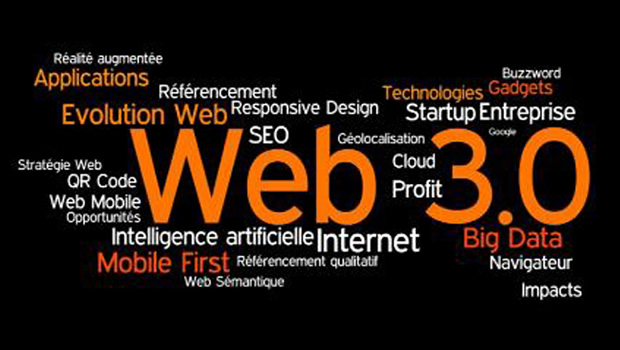
Ontologies are another important linguistic component in the Semantic Web. Ontologies are an abstract view of conceptual structure that defines the relationships between different concepts, their attributes and properties. Ontologies can be used to organize and represent information on the web, providing a common framework for representing structured data. They can also be used to provide a common vocabulary model that allows software systems to understand the structure and content of web documents.
XML is one of the primary tools used in the Semantic Web to define the structure, syntax, and metadata associated with Web documents. XML enables software systems to understand and correctly interpret the content of documents, making it possible for different computer systems to interoperate and for data to be accessed by multiple applications.
Another important linguistic component is natural language (NL), which is a set of techniques that allow computers to understand the meaning and relationships between words in a sentence or text. Natural language allows computer systems to parse and extract relevant information from raw text, allowing direct machine involvement in various processes such as sentiment analysis or named entity identification.
Speech recognition is another technique related to automatic natural language processing (NLP). It allows computers to recognize and understand human spoken language by transforming sounds into computer-understandable sentences so that they can take an appropriate action. This technology is very useful for allowing users to perform complex tasks without having to type anything on a keyboard or touch screen.
Finally, semantic markup is a commonly used method of representing knowledge on the web by assigning specific keywords to each text or HTML content that can be found on the Internet. Tags make it easier for the web browser to recognize what relevant information is on each web page, making it easier to navigate through the various documents available on the Internet. In addition, it allows software systems to more easily access relevant information by directly querying the tags associated with each individual document.
Artificial Intelligence and Semantic Web
Artificial intelligence and the semantic web are technologies that improve the way we interact with the Internet. They offer a variety of possibilities for businesses and organizations around the world and can be applied to many fields.
Their applications are varied, and their potential is considerable. The semantic web is a technology that allows computers to interpret the content of web pages to understand their meanings. It uses metadata to describe the content of web pages, allowing computers to recognize specific information such as authors, titles, dates and associated keywords. It can also be used to create links between different types of content on the Internet.
Artificial intelligence is a computer technique that allows a computer to simulate human intelligence by taking into account various data and learning by itself from past experiences. It is widely used to solve complex problems such as voice and image recognition, automated decision making or sentiment analysis.
It also enables computers to perform various tasks without human intervention, such as machine learning-based decision making or predicting future behavior. When these technologies are combined, they can provide a better understanding of web content and help computers perform more complex tasks.
This can be used to improve web search and help find answers to complex questions more easily. Possible applications include extracting relevant information from large numbers of articles or creating virtual agents that can interact with the user. Advances in machine learning have also enabled the development of the semantic web.
Machine learning is a form of artificial intelligence that allows machines to analyze large amounts of data in depth to find hidden patterns and patterns that can be useful for solving difficult problems.
This technology can be applied to the semantic web to more efficiently extract relevant information from a large number of web pages and provide better understanding of web content and provide better answers to user queries.
This study explored the possibilities and benefits of machine learning on the semantic web. The results showed that the use of machine learning on the Semantic Web can provide a variety of solutions to improve the efficiency of information systems and applications. In addition, it can improve access to information while reducing costs and process complexity. In conclusion, machine learning on the Semantic Web offers significant benefits and can be an excellent solution for many companies and organizations.
More on AI by visiting Twitter!
FAQ
What is the goal of machine learning on the Semantic Web?
The goal of Machine Learning on the Semantic Web is to develop computer systems that can interpret and analyze the data contained in the Semantic Web and improve their accuracy by learning from the examples.
What are the main advantages of machine learning on the Semantic Web?
The main benefits of machine learning on the Semantic Web are the ability to capture knowledge from complex data, the ability to reuse acquired knowledge and the improvement of system performance.
Memory: can Google do better than a to-do list?

Since its birth in 2016, Google Assistant has not stopped enriching itself with new features. With Memory, Google wants to bring order to your digital life this time.
Since its inception, Google’s mission has been “to organize the world’s information to make it accessible and useful.” After doing it for the web, Google wants to do it for your life.
The site 9to5Google has indeed just spotted a new feature in test within Google Assistant called “Memory”. Halfway between the to-do list, a note-taking application and a Pocket-like content backup service, Memory aims to put order in your digital life.
A platform to save everything
In concrete terms, Memory is a kind of digital whiteboard on which you can pin complete press articles with the source URL, photos, handwritten notes, drafts of ideas, reminders and a lot of other content such as information about an upcoming trip or a movie that is about to be released.
In short, everything displayed on your smartphone screen can be saved in Memory using a voice command or a shortcut to be placed on the home screen of your mobile. Each item will take the form of a small card arranged antechronologically and can be “tagged” to put it in an appropriate category.
Putting Google Assistant at the heart of your digital life
But where Google wants to add value is on the context surrounding each content. Memory will be able to automatically enrich your notes by integrating, for example, a YouTube trailer if you save the page of a movie you want to see or by highlighting the cooking time of a recipe you have saved. And of course, it will be possible to search through all the saved content.
Memory is therefore a way of placing Google Assistant even more at the heart of your digital life by offering a sort of hybrid to-do list available on your smartphones, tablets and connected screens. The feature is currently being tested internally at Google and no deployment date has yet been announced.
The semantic web as a future information management solution
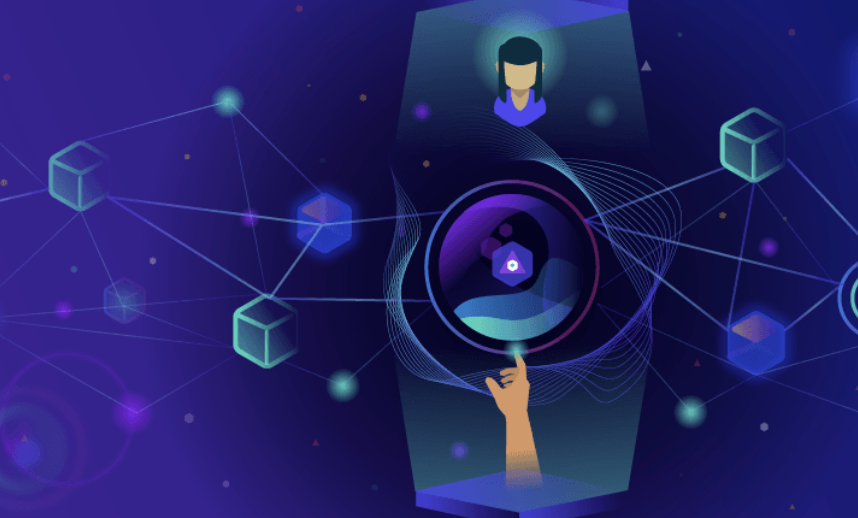
The origin of the integration of structured data does not date from yesterday. The idea of a structured web goes back to 1994 with the creation of the W3C led by Tim Berners-Lee, father of the web, confirmed in 1998 (with the beginning of the work in 1999). It will take a few years of work to define the first protocols and formats.
A rise in industrial power
From 2004 onwards, several protocols and formats to structure data appeared: RDF (Resource Description Framework, the basic language of the Semantic Web), its complement RDF Schema (which brings together processes and tools to define the ontologies that structure RDF resources); OWL (Web Ontology Language, which defines the RDF vocabulary) and SPARQL (a language based on RDF to query data resources).
All these tools, although they allow data to be structured, have yet to be widely used in information management tools. The major groups are not mistaken and “we have seen an increase in industrial use since 2007,” says Fabien Gandon, a researcher at Inria (the French National Institute for Research in Computer Science and Control).
For him, six main issues are at the heart of the development of Web 3.0. First, the confirmation of standards, which benefit from the feedback of 6 years of experience, and redefined in the RDFa 1.1. Then, the massive implementation of the Semantic Web through large companies (Oracle, IBM but also Yahoo even if the question arises since the integration of its search engine in Microsoft Bing, or Google which seems to do “websem” without admitting it). “The full deployment requires tools that are ready,” says the researcher.
Creating an ecosystem around data
Putting public data online is also among the most important scenarios to contribute to the diffusion of the technology. But the issue is necessarily political and its dissemination is likely to be delayed as the interests of some (citizens in particular) are not necessarily those of industry (which wants to monetize this value of information).
“We have a lot of trouble getting people to understand that we can create an ecosystem around data and not value on the real time processing of information”, Nicolas Chauvat regrets. Another issue is skills: “One out of every two phone calls I receive is about a profile search,” says Fabien Gandon. There is a real demand for semantic web engineers and technicians, and also a need for decision makers. In other words, as long as the critical mass of skills is not reached, there is no salvation for the semantic web.
An obstacle that the propagation of the dynamics to go beyond the implementation of standards will allow to reach. This obviously implies continuing research work, particularly through the scaling of processing, taking into account new uses such as mobility and social networks, but also the quality of data and the need to keep interaction as simple as possible through interfaces adapted to democratize the use of the semantic web.
The future of companies faced with mountains of data is at stake, which tends to become more common after a certain size. “Semantic web technologies are emerging as a solution for information management,” concludes the Inria spokesperson.
Google gets closer to Inria on the french market

A partnership agreement has just been signed between Google and Inria. The American giant wants to promote research projects related to the semantic web and machine learning.
Google has strong needs in terms of fundamental research. In order to quench its thirst for new technologies, the firm is getting closer to Inria, with which it has just set up a strategic partnership.
According to the terms of the agreement signed on Monday, the National Institute for Research in Computer Science and Control will “support Google’s innovation strategy” by facilitating interactions with its teams.
In return, the Mountain View Internet group will guarantee the French institute privileged access to its research grants, which are generally conditional on passing a competition.
Up to several hundred thousand euros per project
Research projects, particularly in the fields of machine learning, semantic web and database management, can be funded over a period of one year, from 50,000 to 100,000 euros, through the “Research Awards”.
With the “Focused Research Awards”, the follow-up can be spread over several years, with envelopes of several hundred thousand euros. Financial support for individuals – doctoral students in this case – will be available through “PhD Fellowships”.
The approach is similar to sponsorship, with researchers retaining intellectual property rights to their discoveries, which are systematically published for the community.
Six projects from Inria have already received awards since 2009 and the creation of the “Google Research Awards”. “And the pace has accelerated in recent months,” say the two parties.
An initiative praised by all
Geneviève Fioraso, the French Minister of Higher Education and Research, described the agreement as “a promising one for the development of high-level teams in France that are skilled in the technologies essential to the digital economy.
She is seconded by Fleur Pellerin. The French Minister for Innovation and the Digital Economy sees this alliance as “proof of France’s attractiveness in digital technology, a field of excellence for our researchers in companies and laboratories.
And Vinton Cerf, vice-president of Google, concluded: “Inria’s history is rich with discoveries in the field of fundamental research. This institution carries with it values […] of creativity that correspond to Google’s DNA: innovation.”
Google launches 3 new applications to help you disconnect from the Internet
Because we spend too much time every day on our mobile phone, Google has just launched three new apps: Envelope, Activity Bubbles, and Screen Stopwatch. The goal: to better manage the time dedicated to new technologies and regain control over them. These applications have been created as part of Google’s experiments for the digital well-being of its users.
Screen Stopwatch
The Screen Stopwatch application may be the most effective way to get you off your smartphone. A (very large) stopwatch is displayed in real-time on your device’s screen. The purpose seems obvious: it should show you how much time you spend using it each day.
The stopwatch starts as soon as you unlock your device. A constant ticking sound from your home screen even encourages you to stop touching it so that you can concentrate on other, healthier activities.
Activity Bubbles
Activity Bubbles help make you aware of how you use your phone over the day. The principle is simple: each time you unlock your smartphone, a bubble will be created on your wallpaper. The bubble gets bigger, the more time you spend on your device. The more you use your phone, the more bubbles you’ll have on your screen at the end of the day.
This application is part of the Digital Wellbeing Experiments program launched by Google to share ideas and tools, which aims to find a better balance with the use of new technologies. Activity Bubbles is available on the Play Store.
Envelope
Envelope is undoubtedly the most original, if not the most confusing. Google describes it as “an experimental application that temporarily transforms your phone into a simpler, quieter device to help you take a break from your digital world.”
To use it, Google asks you to print a single PDF provided by the application. Fold this sheet of paper so that it takes the shape of an envelope. Slip your phone inside the envelope.
Using your smartphone for your usual activities (chatting with your friends, checking your social networks) won’t be possible for you. Only the functions of a traditional phone will be accessible: making or receiving calls, using the keyboard buttons printed on the envelope, or the camera. You will then have to unseal the envelope to see the photo or video you have taken.
Google has thought of everything: the application is optimized for OLED screens, so it won’t drain your battery if you want to spend a whole day on your digital detox. At the end of its use, you’ll see how much time you spent without using your smartphone.
The Envelope application is available for Pixel 3a owners.
The semantic cocoon is not a semantic silo!

The semantic cocoon sets up a hierarchical architecture of pages linked together by contextualized links and a natural semantic universe. It reminds me of the SEO silo. The two concepts are similar and concern the organization of pages within a website to give juice to a target page using contextualized links from the lower level pages.
The semantic cocoon as developed by French SEO Laurent Bourrelly is an optimization of the internal linking, a thorough knowledge of the specific internal topic-sensitive PageRank formula but also a different starting point. While siloing consists in organizing the pages of a site around pages gathered by theme, a semantic cocoon will be set up to meet the expectations of the Internet user.
Silo SEO and semantic cocoon: what are the differences?
Let’s take an example with an e-commerce site that offers shoes for men. Siloing is an organization around a primary keyword (and often around products or services for sale), here “men’s shoes.”
If the subgroups are “sports shoes,” “boots and boots” and “street shoes,” it will be difficult to catch the Internet user who is looking for “comfortable shoes.”
Proximity between the two notions? Not really
Indeed, these two concepts have common points, and many SEO professionals reciprocally use both terms and thus maintain a certain confusion. The silo can try to insert a notion of semantics into its deployment, but a semantic cocoon is part of a real editorial strategy. The starting point of the cocoon is the definition of a persona.
The thematic silo
It is what we most often find on the web. Sites built in thematic silos are the majority. Sub categories organize the product sheets, each subcategory classified in its parent category. Everything is in its place. Nevertheless, as an e-merchant you should ask yourself the following questions:
- Does the search engine find what it needs to understand and, above all, classify the pages?
- Does the Internet user also have the same logic as yours for the classification of products?
- Does the Internet user find the answers to the questions he or she is asking?
Semantic siloing
E-commerce sites that use this semantic silo system have taken a further step. The notion of semantic writing is part of the project. We will try to please search engines and try to make them understand without ambiguity what the page’s purpose. Some will even try to insert a notion of semantic shift between the sub-category pages and the parent category page. In the case of the semantic silo, you try to answer the first question (I try to make myself understood from the search engine). But you left out the Internet user without solving the other two questions.
The definition of a semantic cocoon
The semantic cocoon is a system for organizing textual content intended to answer Internet users’ questions on a given theme and linked together by skilfully placed hypertext links.
The semantic cocoon places the Internet user AND his or her concerns at the center of the process. This sentence is essential… meditate on it! The keyword search will come in a second step. We will not only aim at positioning on a specific request, but we will cover the entire theme.
Your product is no longer the starting point for your actions but becomes THE answer to the Internet user’s question. It will allow you to make you understand engines; your site will become the most relevant, the most remarkable on the subject. Your visitors, prospects, customers must become your primary concern. The semantic cocoon will only be used to answer their questions.
What will be the web of tomorrow?

This question can be approached from 2 different angles, the evolution of web technology on one hand (web 3.0, semantic web, 3D web…) and the evolution of web usage on the other hand.
The point on which all the actors of the web agree is a simple observation: The internet has already undergone several changes since its creation and others are yet to come.
What is web 1.0, web 2.0?
Since 1995, Web 1.0 has been built in a pyramidal way. Webmasters write and layout information, Internet users are only receivers without any power and any real possibility of response except for forums and emails. In the era of Web 1.0, the Internet user is passive. The production and hosting of content is mainly carried out by companies and web agencies, the pages are static, and the updates of information are very random. Web 1.0 is, therefore, the era of the static web. At that time, we had no hébergeur wordpress and the market for CMS was not really competitive!
We then talk about Web 2.0 from 2003, gradually Internet users become active players, in the meantime, the number of individuals having access to the web is multiplied by 5 (from 500 Million in 2003 to more than 2.2 Billion in 2013).
As they navigate, Internet users add content through hypertext links and other tags, annotations or comments. Internet users create content through the emergence of blogs, wikis (Wikipedia is the largest wiki on the Web) and citizen newspapers such as Agoravox.
Web 3.0, semantics, 3d, yes, but still…
Some studies and sources allow us to date the periods of the different versions of the Web (web 1.0, 1.5, 2.0, 2.5, 2.B …, web 3.0), they sometimes appear contradictory. It is indeed more accurate to talk about the Web era (without obscuring the Marketing aspect) by considering periods as spaces of time until historians look at the subject.
What more does Web 3.0 has in store for us?
Web 3.0 is, therefore, the next significant evolution of the internet, significant trends are already making it possible to define its main outlines, others think we are already there!
The production of web 3.0 will be perfectly compatible with all devices (mobile friendly). Regarding technology, it will solve interoperability problems between online services, isolated user communities, etc. All software applications will be accessible online (Cloud Computing) and will adapt to the terminals used, which means merging the three existing Internet worlds: 3D Internet (fusion of the traditional Internet with mobile Internet and the Internet of Things: with RFID chips, QRcode, television, refrigerators, clock radio, etc.).
The 3D web, the one that consists in displaying content in 3 dimensions, already exists. We call it “interactive 3D” content, this display technology will initially become widespread for virtual tours (the Louvre), games, panoramas… before being distributed more widely.
With the Semantic Web (Data Web or Linked Data: Tim Berners-Lee from W3C) all sites will be linked in one way or another. Thus we will be “on file,” in particular through our navigation, our different profiles, our relationships and our comments on social networks; the era of king marketing in short…
The sites are invaded by contextual advertisements related to the documents consulted and our consumption habits. Search engines will become more “intelligent” and the results more targeted.
Beyond these “material and technological” aspects, our Internet environment is gradually transforming into a real information ecosystem in which we will be completely immersed.
The Internet will always be with us and why not in us? We will be constantly “geolocated,” and our consumption patterns scrutinized and even shared automatically. We will be informed on an ongoing basis according to our interests and the opportunities to be seized during all our travels.
Web semantics and SEO
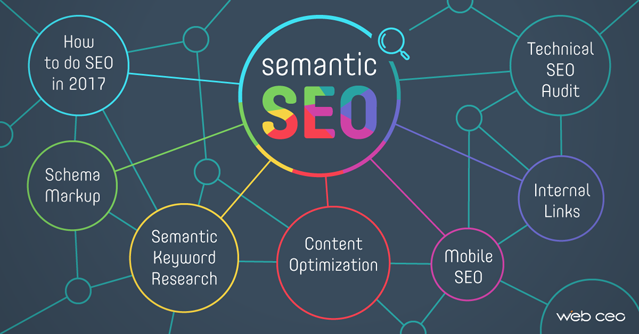
In contrast to web 1.0, which was primarily a consultative web, a spectator web, the current world wide web is very collaborative, social. It is logically called web 2.0.
Its inventor, Tim Berners-Lee, predicted a few years ago that we were entering the 3rd phase of the web. It is called the semantic web. To sum up, people can nowadays collaborate, but machines still do not have the standards to do so. Web 3.0 allows, thanks to rules currently being finalized, communication between databases and their intelligent processing. The network will be semantic because the Internet offers a particularly powerful playing field for standards that have existed for a long time. Today, these systems are becoming more powerful thanks to the mass of data stored on the web.
Technically, how does it work?
The basic notion of semantic web is an ontology, a representation of the properties of what exists in the real world in a formalism that allows automatic processing. There are ontologies in all fields. If we take cinema as an example, we will integrate into the system that the director of the film “For a handful of dollars” is “Sergio Leone” and that Clint Eastwood is the leading actor. If we extrapolate this example to the web, which is made up of millions of data, it can give deep connections.
How to make your site more semantic?
The semantic web will be useful for a large number of applications:
- Make search engines more intelligent,
- Describe and process multimedia documents,
- Building multilingual and multicultural solutions
- Enable the fusion of very diverse information
In general, the semantic web is still in its infancy. It is always complicated to develop your site with this type of functionality. Nevertheless, it is necessary to get into the habit of thinking “semantically” by, for example, installing a system of tag clouds on your site or by structuring your data as much as possible.
There is, therefore, the data web, the “Giant Global Graph,” the “Linked Open Data,” the web 3.0, etc. To understand them well independently of each other, it is necessary to start from the internet of data. The web is characterized by pages linked to each other; we remain in the documentary field. With web data, on the contrary, works directly with databases. The data are also connected via links. We are therefore no longer working only on documents but raw data. This vision gives birth to Giant Global Graph when millions of users will be able to link and exchange data with each other. Linked Open Data is a set of data that can be put online and linked. This includes government data, academic data, etc.
Finally, web semantics consists of giving meaning to data by explaining their schema. For example, when an Internet user searches for a report, it will be possible to link the story to a document, which will allow him/her to be presented with not only reports but also documents. These will be classified into subtypes. So we create data classes.
As you will have understood, the semantic web is a model that allows data to be shared and reused between several applications. The objective is to enable users to find, share and combine information more simply without intermediaries.
Web 3.0: Semantic Web
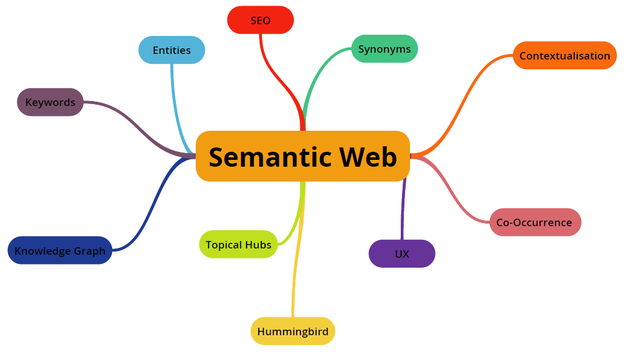
The World Wide Web, the invention of Tim Berners-Lee in 1989, has been a phenomenal success.In just under 30 years, more than 3.81 billion people worldwide have used it, and the Web has grown more prominent over the years with a vast amount of information.
Fortunately, solutions exist to find relevant information in all this content.
Today, search engines, thanks to their crawlers, can recursively browse through the links of billions of web pages and index their content in massive databases. Thus a user performing a search will obtain a list of results classified in order of relevance corresponding to criteria specific to the search engine such as the frequency of keywords, density index, etc.
The solution: the Semantic Web!
The Semantic Web is a concept designed to enable machines to understand the meaning of information on the Web.
 The aim is thus to set up, in addition to the network of hyperlinks between traditional web pages, a network of links between structured data. Tim Berners-Lee, director of the W3C, coined the term. He oversees the development of Semantic Web standards proposals.
The aim is thus to set up, in addition to the network of hyperlinks between traditional web pages, a network of links between structured data. Tim Berners-Lee, director of the W3C, coined the term. He oversees the development of Semantic Web standards proposals.
Resource Description Framework (RDF)
Created in 1999, RDF is a data exchange format on the Web and is the primary language of the Semantic Web. RDF adopts a graph model whose objective is to describe resources on the Internet (Companies, Books, Articles, etc….).
Three characteristics define an RDF data:
- its subject: the address of the targeted resource
- its predicate: the property assigned to the targeted resource
- the object: the value related to the property of the targeted resource
Ontologies
In computer science, an ontology represents a structured set of terms and concepts representing the meaning of an information field. The purpose of ontologies is to express the world around us in such a way that it is understandable by a machine and then to be able to make deductions from it.
There are particular languages to create these ontologies. Among them, we have for example OWL (Web Ontology Language) which is a knowledge representation language built on RDF.
FOAF (Friend Of A Friend) is a project whose aim is to create a network of web documents that can be understood by machines describing individuals and the relationships between them. Without the need for a centralized directory, FOAF allows people to be linked to each other as if everything was described in a single database.
Thanks to these technologies, the machines will be able to understand questions like the one asked earlier.
Various Semantic Web applications:
Different application areas use the Semantic Web technologies.
In social networks where the Semantic Web makes it possible to increase search possibilities and connect members. For bibliographic/documentary classification, the semantic web is also present in companies to collect and analyze large volumes of data.
Even in the E-commerce industry, to describe in a structure the products, prices, and information related to the company, it allows search engines to exploit this essential data better to restore them in their search context.
Importance of the Semantic Web

To say the internet is in a state of flux is an understatement. The internet is always changing, evolving and adjusting. And one of the changes that we could start to see in the next few years is the development of the semantic web.
But what is the semantic web? Why is it useful? And what purpose does it serve?
Understanding the Semantic Web
Before we go too deep into the semantic web, let us break down what it means. The word semantic implies that it has something to do with language. After all, semantics is the concept of properly arranging variables such as letters, numbers, symbols and spaces so words and phrases can be understood.
The same concept is true of the semantic web. It is about arranging information that is located online so that it can be easily understood. But the key aspect to the semantic web is that information should be organized so that it is better understood by machines!
 Machine Learning
Machine Learning
People are already able to understand information online. Whether you are searching for a recipe, the price of a book or the latest television show episode, information is laid out in a way that you would understand. It is laid out so that you can understand and interpret that information to your liking.
But the problem is that our way of arranging this information online, which is done through HTML and other computer languages, is not applicable to machines. The machines are not able to understand or interpret enough of this information accurately enough or quickly enough.
The semantic web is the idea that machines should be able to do what we are doing today. That machines should be able to seek out and understand the information that is listed online.
Everyone Benefits
The idea of a machine being able to “go online” and seek out information, understand it and then interpret it is scary. But the truth is that everyone would benefit. Not only would machines have an easier time understanding and interpreting the information, but they would also be able to determine if it is accurate. They would be able to distinguish between random information and details that come from a proper source. And that would lead to a lot less misleading and downright false information that we find online today.
Major Organizations Benefit Too
There is so much information on the web. Being able to quickly search through that information for specific details is a hard job. While there are search engines and other tools that can serve this purpose, they are still not perfect.
Having the semantic web in place would mean that sifting through data would be even faster and more accurate than it is right now. Such a concept would be useful for big companies, educational institutes, medical facilities, law offices and more!
Adding Meaning to Data
The problem is that right now machines are able to sift through data based on parameters we set. However, machines are not sure what the data means. There is a huge difference between a machine looking up a phrase and regurgitating the first result, compared to the machine understanding the query and the resulting information that it is receiving.
And with online assistants, AI and other tech on the rise, it will be interesting to see how the semantic web plays into everything. Even future tech such as driverless cars, which may become mainstream in a decade, will be linked to the semantic web. It is all about leveraging the power of machines and the vast information that is available online, so that machines are able to interpret that information in a more accurate and productive way.
Semantic Web and Online Assistants

There is a lot of buzz around online assistants in the past couple years. If you had asked most people five or six years ago about having a personal online assistant in their home, they would find it absurd. But now we have devices from Apple, Amazon, Google and other companies in many first world homes.
 People have embraced technology such as the Echo from Amazon or Google Home. Why? Because these devices are designed to make our life easier. Want to know the weather? Ask Alexa. Want to set an alarm or set aside time for a meeting next week? Tell the online assistant and it will do the relevant bookings for you.
People have embraced technology such as the Echo from Amazon or Google Home. Why? Because these devices are designed to make our life easier. Want to know the weather? Ask Alexa. Want to set an alarm or set aside time for a meeting next week? Tell the online assistant and it will do the relevant bookings for you.
But what if online assistants could do so much more? And not just for people, but for companies and educational institutes too.
Semantic Web
Most people have heard about the semantic web in passing, but not in any great deal. The concept of the semantic web is to create a web where information is easily accessible and understandable by machines.
Why is the semantic web an important concept? Because machines have a hard time understanding and interpreting information when it is written out for humans.
For instance, many of the sites that we use to gather information have words formatted around our way of understanding details. Amazon will have the title of a book and its price listed in a way that you can understand. But it does not necessarily mean that a machine could understand that information. Many times, machines cannot understand that information.
It is why online assistants are so limited in what they can do. Setting meetings and finding basic details are easy, repeatable tasks that online assistants are programmed to do. But it is still very hard for machines to gather complex information, determine its accuracy and interpret that information.
That is why so many experts believe the semantic web is a crucial concept.
 Future of AI
Future of AI
In many ways, the future of AI will be determined by the success of establishing the semantic web. If there is a version of the web where machines are able to easily read, understand and interpret information, it can only benefit people, organizations and businesses.
It is complicated work to develop languages and concepts so that information we consume is processable by machines. But it is vital work that is going to shape the coming decade of innovation.



